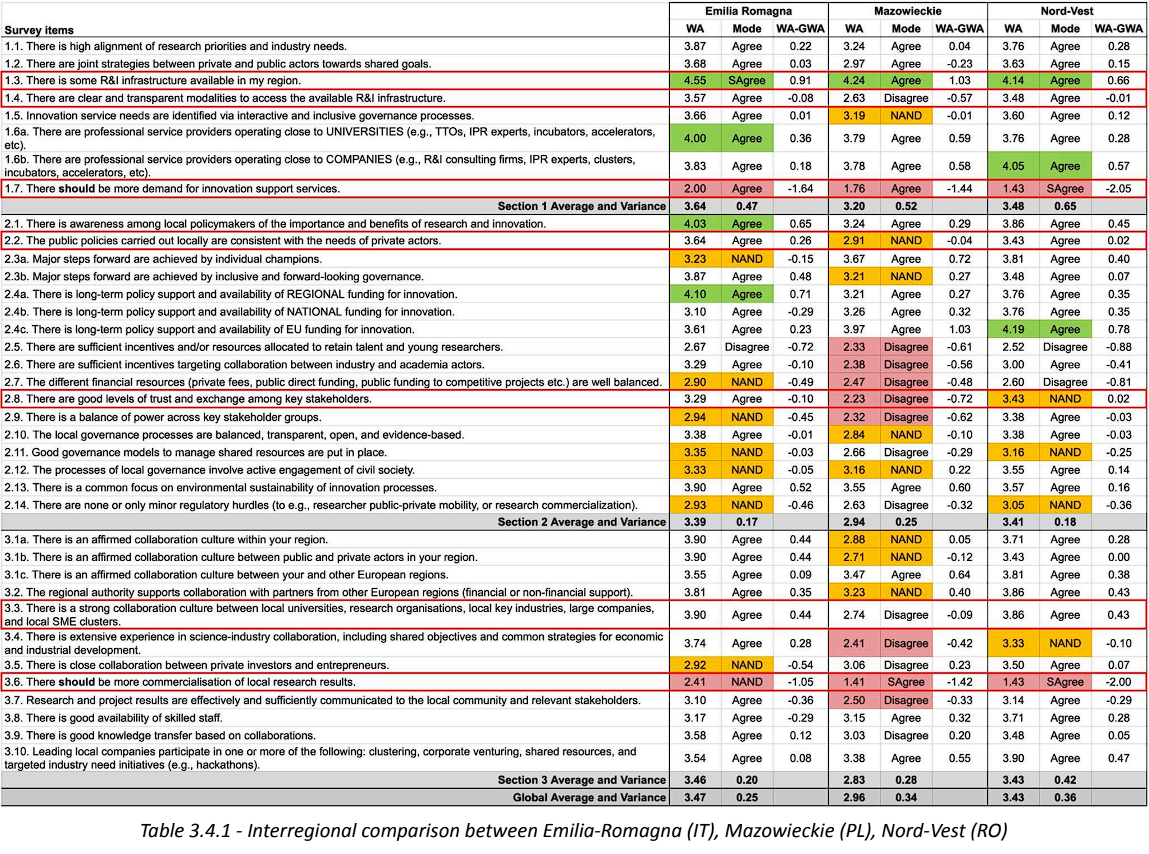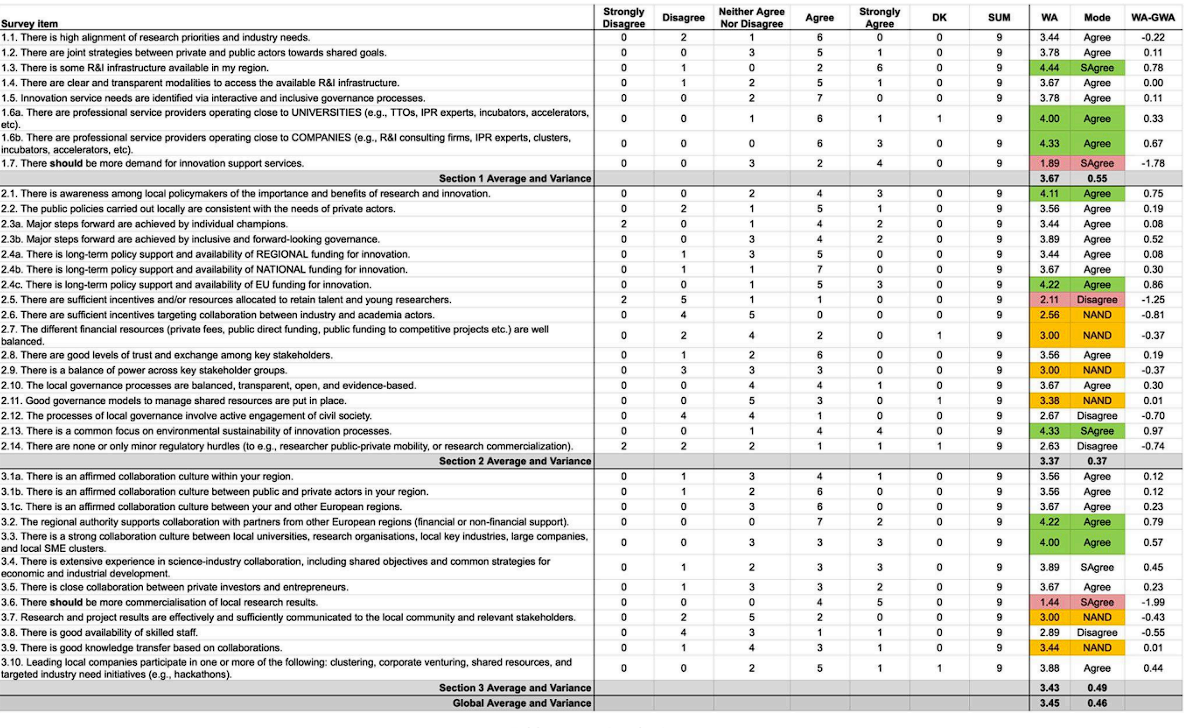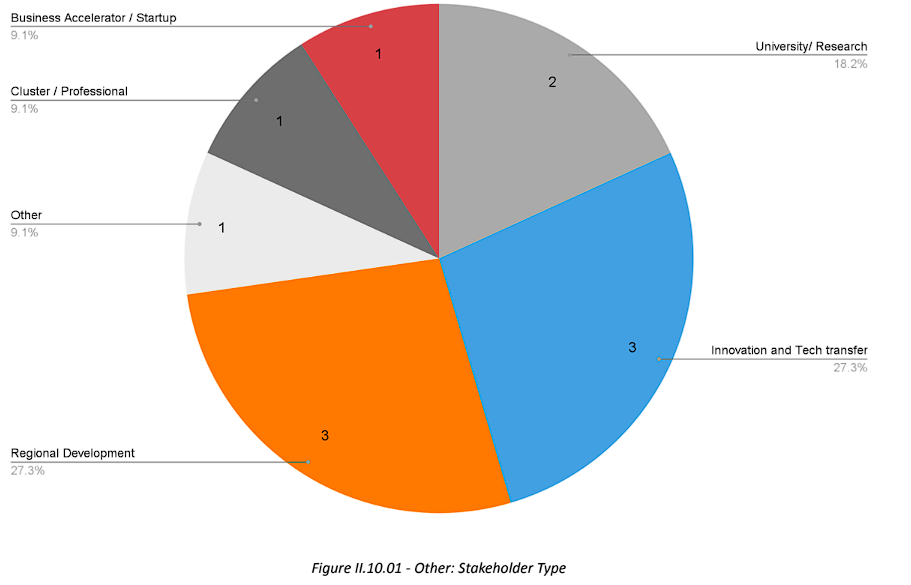Deliverable D2.3
EU-Wide Stakeholder Survey on the Most Recurrent Characteristics of Knowledge Ecosystems
ABBREVIATIONS
AT Austria
CZ Czech Republic
D Deliverable
DK Don’t know
EEA European Economic Area
ES Spain
ERA European Research Area
EU European Union
HR Croatia
IPR Intellectual Property Rights
IT Italy
NO Norway
PL Poland
PT Portugal
RIS Regional Innovation Scoreboard
RO Romania
RP Responsible Partner
R&I Research and Innovation
TTO Technology Transfer Office
WA Weighted Average
WA-GWA Difference between WA and the Group WA
WP Work Package
1. INTRODUCTION
This document represents an integral part of ERA_FABRIC’s research into success factors for Europe’s knowledge ecosystems, ERA-Hubs.
With this deliverable ERA_FABRIC aims to illustrate and analyse the results of a EU-wide stakeholder survey carried out, which involved 169 stakeholders across Europe, and in particular in the 9 participating partner regions within the ERA_FABRIC project. The survey questions relate to the success factors identified through the ‘Testing of the ERA Hub Concept – Pilot Phase’ (Horizon Europe Work Programme 2021-2022).1
The stakeholder survey aimed to assess the success factors previously identified and how a diverse range of stakeholders view these criteria, thus assisting the project team in understanding whether these criteria are reflected across different EU regional ecosystems. The ultimate ambition is to establish and understand recurrent characteristics amongst research and innovation ecosystems across Europe.
The remainder of this document assesses the methodology, results, main findings and final conclusions.
This study also seeks to provide valuable insights into the state of Research & Innovation ecosystems across diverse regions within the EU/EEA, facilitating evidence-based decision-making for future activity within the ERA _FABRIC project.
2. METHODOLOGY
2.1 The Survey
The aim of the survey was to collect European stakeholders’ perceptions of the success factors of their regional R&I ecosystems.
The survey and its structure are the result of a multi-stage process. Firstly, the success factors from the document ‘Testing of the ERA Hub Concept – Pilot Phase’2 were analysed, discussed and evaluated between ERA_FABRIC Partners. The resulting items were then compared with the conclusions drawn from the previous Mapping Case Studies exercise3 and discussed again with the Project Partners. Finally, a draft of the questionnaire was shared with the Partners to be tested. The feedback was later collated and added to form the final version of the survey.
The survey was originally divided into four parts:
- Stakeholder Typology (incl. thematic area);
- Access to Research & Innovation Infrastructure and Services;
- Policy Support & Governance Processes;
- Collaboration & Knowledge Transfer.
The ‘Stakeholder Typology’ section was numbered with ‘0’ as it was aimed at collecting baseline characterising information about the stakeholders, including which ERA_FABRIC thematic area was most relevant to them. Regarding the type of stakeholder, the same categories as featured in the Mapping of Regional/Local Stakeholders and Communities and Needs Analysis4 have been used.
Areas 1 to 3 delve into the main areas of investigation:
- Clean renewable energy,
- Sustainable manufacturing,
- Bio-based circular economy.
Items marked with an asterisk were mandatory to fill out, while survey items that dwelled on different aspects of the same topic were labelled with additional letters (in alphabetical order) but kept the same item number.
When answering the survey, respondents were able to answer each question using a Likert scale. This is a unidimensional scale that’s often used in research to collect qualitative data from respondents, such as attitudes or opinions.
The Likert scale that was used throughout the survey is as follows:
- Strongly disagree
- Disagree
- Agree
The inclusion of ‘Don’t know’ allowed respondents to answer every question even if they weren’t knowledgeable about all categories.
The full survey can be found in Annex I.
2.2 The Hypothesis
Following the ‘Mapping Case Studies of Knowledge Ecosystems Across European Regions 2023’5 analysis, a set of common ground elements were identified:
- A territorial vocation;
- A multi-level governance process;
- Explicit systemic interactions among the actors;
- A strong dynamic towards innovation processes;
- Specific and differentiated roles of the actors involved;
- A balanced equilibrium between private and public actors, private and public aims, and private and public financial sources;
- A common focus (although variable in intensity) on the environmental sustainability of the innovation process;
- An intense mobilisation of the public and private stakeholders around shared objectives and common strategies of economic and industrial development;
- A clear horizontal integration through widespread connections towards other knowledge ecosystems, independently of regional or national borders.
We hypothesized that the answers from the survey would help us validate conclusions from previous studies. In order to test those conclusions, all survey questions were linked to the relevant item from the list of common ground elements listed above, as reported in the Table 2.2.1 that follows:
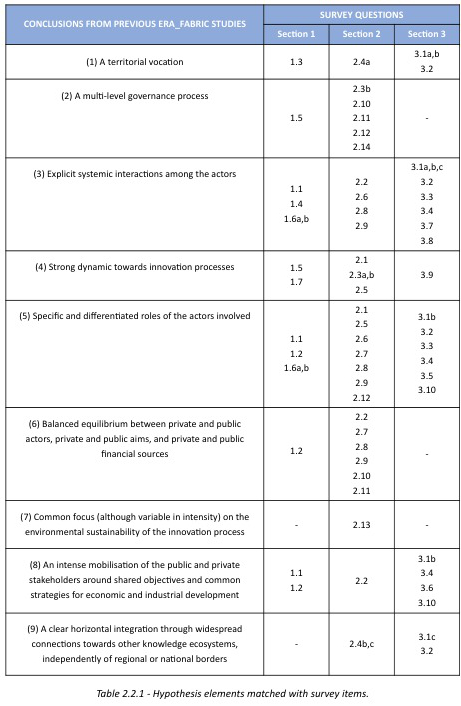
2.3 Distribution and Timeline
Partners played a crucial role in contacting regional stakeholders, serving as a vital channel for distributing the survey. The survey was hosted on the ERA_FABRIC website as an embedded Microsoft Office Form and was managed by the Warsaw University of Technology project team, responsible for communication and outreach within the ERA_FABRIC project. The link to this online survey could be easily shared via email and completed by stakeholders on all smart devices or computers.
The survey was live on the ERA_FABRIC website from January 29th 2024 until March 15th 2024. It was active for a total of 7 weeks.
Beyond email channels, most partners also promoted the survey via their website and LinkedIn profiles, or via direct contact with stakeholders to boost engagement.
As the Responsible Partner, Trondheim Tech Port contacted all Partners about the survey before its launch, weekly during the process, and following the end of the submission period. This was done to update the Partners on the process and the amount of submissions from their regions.
Even though the main focus of the survey was towards the Partners’ regions, European stakeholders from other regions were also welcome to participate and complete the survey. In particular, the survey was shared with ERA_FABRIC’s sister project COOPERATE, WIDERA.net and the European Regions Research and Innovation Network (ERRIN).
2.4 Partner Engagement
To ensure balanced representation from across the regions each ERA_FABRIC Partner was tasked with ensuring a minimum of 10 responses from their region, with a total aim of 100 stakeholder responses from across Europe. Regional analysis is at the very core of this exercise and active input from each ERA_FABRIC partner held significant weight in ensuring meaningful analysis could be extracted from this deliverable.
2.5 Data Presentation and Analysis
2.5.1 Data visualisation
To visualise the survey’s results, the data will be presented at the European level as well as region-by-region – including Other, for stakeholders who did not belong to any of the regions listed. Data collected in section 0 (Stakeholder Typology and Thematic Area) will be shown through simple pie charts, while data from the other three sections – 1. Access to Research & Innovation Infrastructure and Services, 2. Policy Support & Governance Processes, 3. Collaboration & Knowledge Transfer – will be visualised through stacked vertical histograms. This specific kind of graph allows for the immediate visualisation of the number of different responses to each survey item.
The data will also be presented by putting emphasis on thematic area and stakeholder distribution.
After the survey data collection had been concluded, the ERA_FABRIC Partners expressed the need to simplify the stakeholder categories for the sake of clarity and data visualisation.
In order to simplify the stakeholder distribution visualisation, the following category clustering will be used:
- Governance Bodies
- Academia & Research
- Business
- Intermediaries
- Civil Society
The table below shows which survey stakeholder categories were matched with which simplified/clustered category:
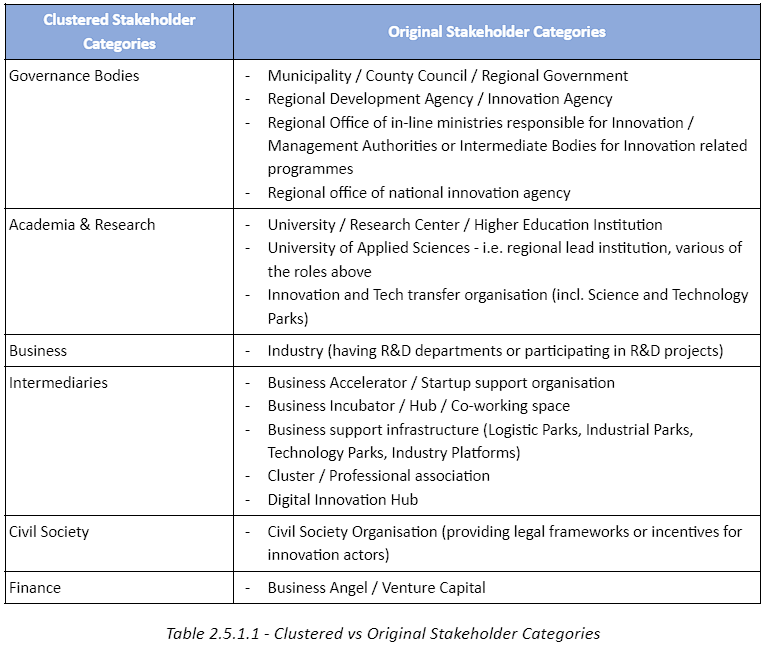
Civil Society – Civil Society Organisation (providing legal frameworks or incentives for innovation actors)
Finance – Business Angel / Venture Capital
When answering the survey, respondents were also able to select the category ‘Other’. These responses, if any, will be vetted one-by-one and assigned to the most relevant clustered stakeholder category.
2.5.2 Data analysis
In addition to the data visualisation, a simple statistical analysis will be implemented. This will include the following elements:
- Weighted average (WA), the result of assigning 0 points to each DK (Don’t Know) answer, 1 to “SDisagree” (Strongly Disagree), 2 to “Disagree”, 3 to NAND (Neither Agree Nor Disagree), 4 to “Agree” and 5 to “SAgree” (Strongly Agree), divided by the number of valid responses (ie. after excluding the DK answers)6;
- Mode, the most frequent judgement, excluding DK;
- The difference between the WA and the Group WA calculated for that group of questions (WA-GWA).
Consequently, the survey items will be scored according to the following legend:
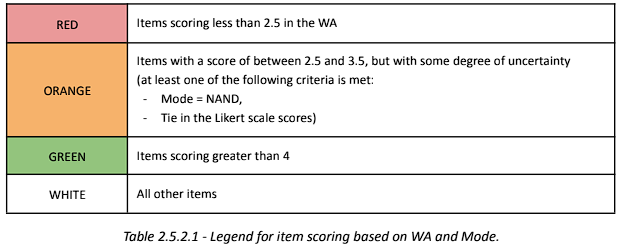
Items marked in ‘red’ portray an issue, ‘orange’ items highlight uncertainty, while ‘green’ items reveal areas that are overall positive, ‘white’ items identify areas that aren’t significant.
This colour-coding will be adopted when looking at an overall comparison between regions (excluding ‘Other’ regions), thematic areas and stakeholder types, including WA and Mode.
2.6 Ethical Considerations and Quality Assurance
All stakeholder responses are anonymous and therefore no personal data has been handled in this deliverable.
This deliverable has been developed in accordance with ERA_FABRIC’s policy on ethics, as established in its Gender & Ethical Requirements7reference document. This details guidance to Project Partners concerning research integrity and principles, based on the European Code of Conduct for Research Integrity.
Transparency in reporting methodology has been ensured to facilitate accurate reporting and project accountability.
By adopting a systematic and rigorous methodology, this study provides valuable insights into the state of R&I ecosystems across diverse regions within the EU/EEA, facilitating evidence-based decision-making in future activity within the ERA_FABRIC project.
3.RESULTS
A total of 169 answers were received, and they had the following distribution:
- Catalonia (ES) – 9
- Emilia-Romagna (IT) – 31
- Jadranska Hrvatska (HR) – 12
- Lower Austria (AT) –14
- Mazowieckie (PL) – 34
- Norte (PT) – 8
- Nord-Vest (RO) – 21
- South Moravia (CZ) – 14
- Trøndelag (NO) – 15
- Other – 11
Even though the target of minimum 100 submissions was met, the variation amongst regional responses dictates that this analysis mainly focuses on the European Level and comparison between regions. Detailed individual regional results can be viewed in Annex II.
The original survey data can also be found in Annex VII.
The following chapter will present the following results:
- European overview – this section shows the survey results in their entirety;
- European overview grouped by thematic area;
- European overview grouped by stakeholder type;
- Regional comparison – this section shows regional results side-by-side;
- Regional clustering – in this section regional results have been clustered according to their Regional Innovation Scoreboard (RIS) ranking.
3.1 European Overview
3.1.01 Stakeholder Type
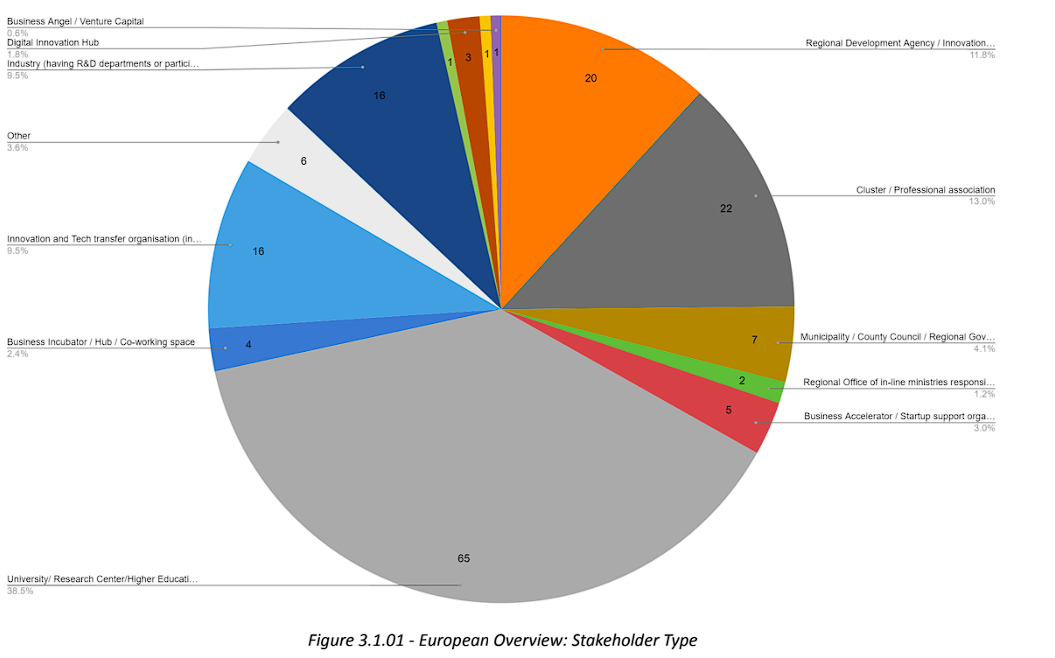
3.1.02 Thematic Area

3.1.2 Policy Support and Governance Processes
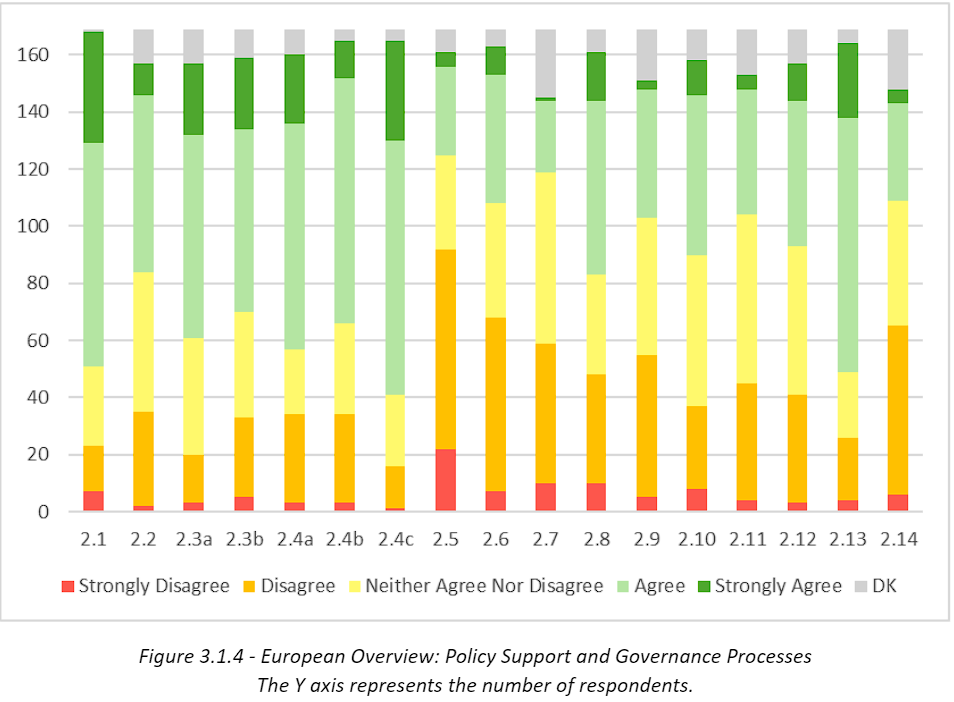
3.1.3 Collaboration and Knowledge Transfer
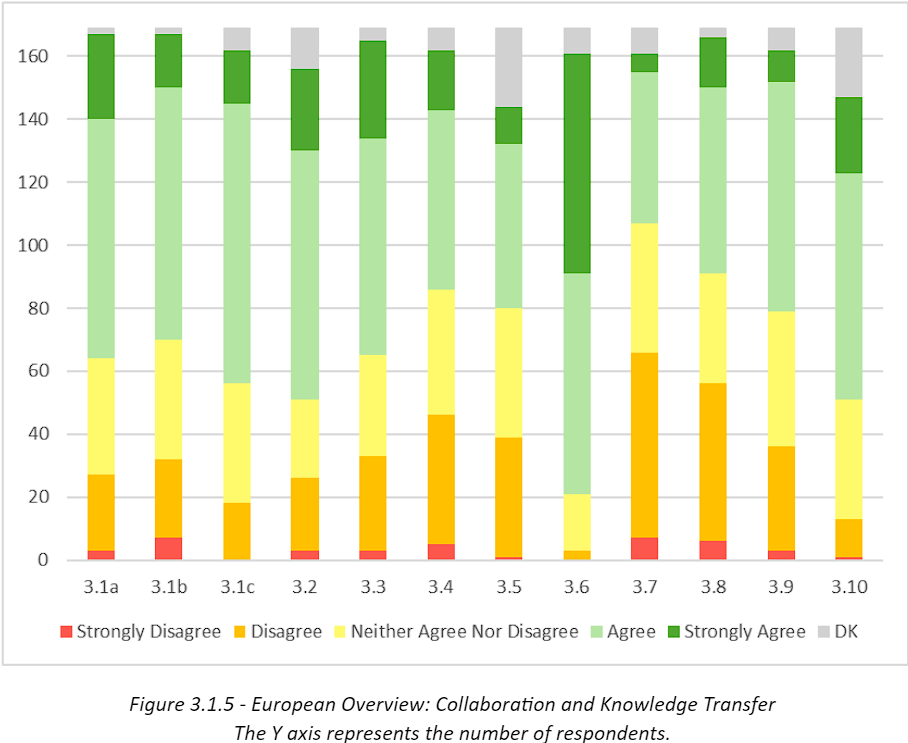
3.1.4 Global Results

3.2 European Overview vs Thematic Area
To assess the importance and relevance of the Thematic Areas, this report also presents the survey results comparing answers from stakeholders representing Sustainable Manufacturing, Bio-Based Circular Economies, and Clean Renewable Energy.
According to the Thematic area division, the survey results were distributed as follows:
- Sustainable Manufacturing – 70
- Bio-Based Circular Economies – 52
- Clean Renewable Energy – 47
The results for the individual thematic areas can be found in Annex IV, while the table below shows WA, Mode, and WA-WGA, for each of the three thematic areas. Survey items marked with a red outline will be addressed in the Main Findings chapter.

3.4 Regional Comparison
When taking the amount of responses per region into account, only three regions had enough submissions to be taken into consideration for an inter-regional comparison, namely:
- Emilia-Romagna (IT) – 31
- Mazowieckie (PL) – 34
- Nord-Vest (RO) – 21
The data for the remaining regions (Catalonia, Jadranska Hrvatska, Lower Austria, Norte, South Moravia, and Trøndelag) can be found in Annex II.
In order to show interregional variability, the survey results will now be presented by showing the regional WA and Modes side by side using the colour coding presented in chapter 2.5.2. Survey items marked with a red outline will be addressed in the Main Findings chapter.
In light of the limited sample size available for some of the regions, the data will also be presented in a clustered fashion in order to determine whether the data could be comparable.
The proposed clustering was done according to the RIS 2023 data8; each region that submitted at least one survey was matched with its 2023 RIS score as follows:
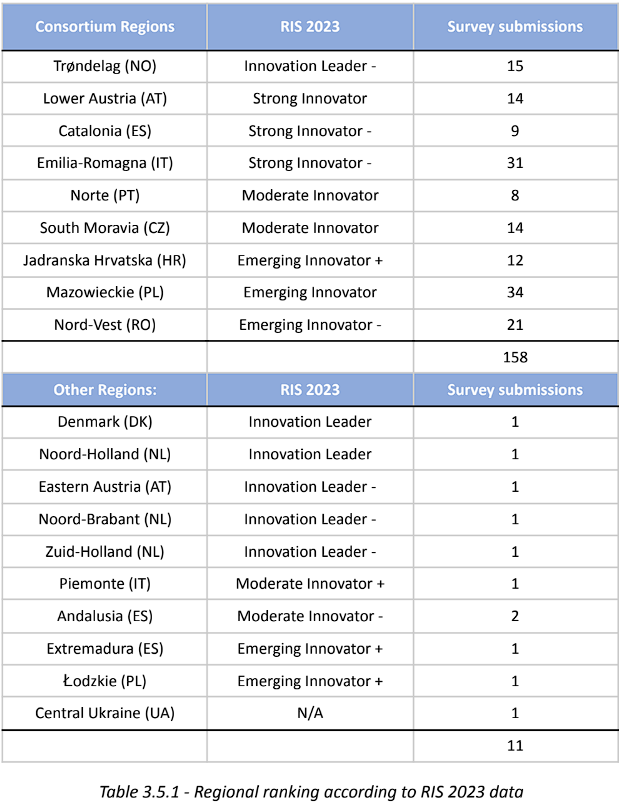
According to the aforementioned alternative clustering in accordance with RIS 2023 scores, the data resulted as follows:
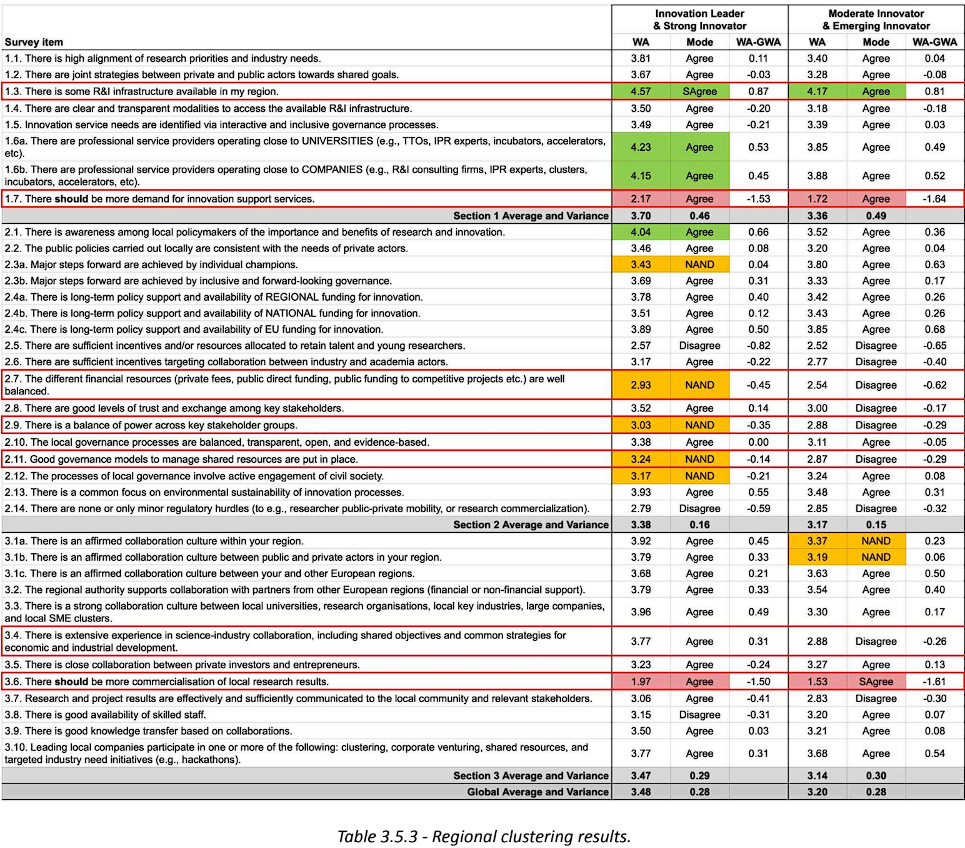
Survey items marked with a red outline will be addressed in the Main Findings chapter.
In-detail results for the individual regional clusters can be found in Annex VI.
4. MAIN FINDINGS
The main goal of this deliverable is, through the survey results, to validate the hypothesis brought forth in Chapter 2.2 of this document; assuming that the survey answers would help validate a set of characteristics defining knowledge ecosystems.
These characteristics will now be analysed one by one in connection with a specific set of survey results (see Table 2.2.1).
A more detailed overview of the statements and stakeholders’ answers and their relation to the characteristics presented in the hypothesis can be found in Annex III, at the end of this document.
Given the limited sample size, the results of this survey should be approached as qualitative data. While the results of the survey offer valuable insights and perspectives they may not wholly reflect the regions and/or stakeholders concerned.
4.1 Although there is regional R&I infrastructure available, more intra-regional collaboration is needed to enhance territorial focus.
This set of survey items – 1.3, 2.4a, 3.1a,b, 3.2 – referred explicitly to territorial vocation, regional structures and interactions in terms of regional availability of infrastructure, funding, and collaboration both within and outside the region.
Strengths:
- There appears to be a territorial vocation as the majority of respondents have agreed or strongly agreed with the statements.
- All the presented results point to there being available regional R&I infrastructure. This was independent of thematic area, stakeholder type, region and regional clustering.
Weaknesses:
- Internal regional collaboration might be lacking.
4.2 Despite the presence of well-balanced multi-level governance processes, civil society involvement is lacking and there are too many regulatory hurdles.
A set of survey statements – 1.5, 2.3b, 2.10, 2.11, 2.12, 2.14 – referred to multi-level governance processes.
Strengths:
- There appears to be somewhat interactive, inclusive, balanced, transparent, and evidence-based governance processes.
Weaknesses:
- Management of shared resources and engagement of civil society seems to be lacking.
- There appear to be substantial regulatory hurdles for innovation, including towards researcher mobility.
- When taking the regional clustering results into consideration, it appears that the governance models to manage shared resources are perceived to be in need of improvement.
4.3 Professional services facilitate systematic collaboration among actors, but this requires incentives, transparency and training.
A set of survey statements – 1.1, 1.4, 1.6a,b, 2.2, 2.6, 2.8, 2.9, 3.1a,b,c, 3.2, 3.3, 3.4, 3.8 – referred to explicit systemic interactions amongst regional actors.
Strengths:
- There seems to be a high alignment between research and industry needs, supported by the presence of professional services operating close to universities and companies.
- There appear to be systematic interactions and collaboration among the actors both within and outside the regions.
Weaknesses:
- There is a lack of transparency towards access modalities to R&I infrastructure; this is also apparent in the regional comparison.
- Incentives targeting industry and academia collaboration are lacking, and stakeholders claim that there is a somewhat lack of experience in science-industry collaborations.
- In particular when considering availability of skilled staff, there appears to be some differences in the comparison between thematic areas, which might imply that not all three areas have the same possibilities and interactions within the ecosystem.
- Trust levels between key stakeholders seem to also be somewhat lacking, perhaps because of the perceived imbalance in power between them. This can also be noticed in the regional comparison.
- Systematic interactions and collaboration among the actors both within and outside the regions are not always clear or established enough, especially with regard to public-private and research-industry collaborations.
- When taking the regional comparison into consideration, there seems to be a pronounced difference in perceived collaboration culture between industry, academia and research.
4.4 There is awareness of the importance of innovation processes, but stakeholder inclusion is limited.
A different set of survey statements – 1.5, 1.7, 2.1, 2.3a,b, 2.5, 3.9 – referred to the presence of strong dynamics aimed at regional innovation processes.
Strengths:
- There is awareness of the importance and benefits of research and innovation at a regional level among policymakers.
- Both individual champions and forward-looking governance can play an important role in advancing policies and governance processes aimed at furthering innovation.
Weaknesses:
- There isn’t enough demand for innovation support services – this was apparent overall, independently of the analysed data subset – which might be a consequence of the partial stakeholder inclusion in the processes aimed at identifying innovation services.
- There aren’t enough incentives and resources to retain talent and young researchers, which together with the lack of sufficient knowledge transfer based on collaboration might act as a hindrance to innovation processes at a regional level.
4.5 There is awareness of the need for differentiated roles in an ecosystem, but task overlap emerges.
Many of the survey statements – 1.1, 1.2, 1.6a,b, 2.1, 2.5, 2.6, 2.7, 2.8, 2.9, 2.12, 3.1b, 3.2, 3.3, 3.4, 3.5, 3.10 – referred to the presence of specific and differentiated roles of the actors involved in knowledge ecosystems.
Strengths:
- As there were very few ‘Don’t Know’ answers, we can say that the respondents are aware of the existence of differentiated roles within their regional ecosystems.
- The existence of differentiated roles was also apparent through the ‘Stakeholder Type’ section of the survey which asked respondents to choose which stakeholder type they identified with.
Weaknesses:
- Some stakeholders selected the option ‘Other’ when filling out the ‘Stakeholder Type’ section of the survey, implying a potential overlap in stakeholder typologies or a lack of understanding of the different stakeholders’ roles that previous ERA_FABRIC tasks identified.
4.6 Even though public-private strategies are in place, there isn’t enough focus on private actors’ needs.
Some of the survey’s statements – 1.2, 2.2, 2.7, 2.8, 2.9, 2.10, 2.11 – referred to the interaction between public and private actors, including both aims and financial resources.
Strengths:
- There appear to be joint strategies between private and public actors towards shared goals.
Weaknesses:
- Public policies are somewhat lacking consistency towards private actors’ needs. Differences in the consistency of public policies can also be appreciated in the regional comparison.
- There appears to be a lack of balance in financial resources and their management, apparent in the regional clustering analysis.
- There is a lack of openness and trust.
- There is a lack of power balance across key stakeholders; this was apparent in both the thematic area and regional clustering data subsets.
4.7 There is a common focus on environmental sustainability of the innovation processes.
One survey statement – 2.13 – referred to a common focus (although variable in intensity) on the environmental sustainability of the innovation process.
Strengths:
- There appears to be a common focus on the environmental sustainability of innovation processes.
4.8 Regardless of strategies being in place, there is a lack of alignment between public policies and private actors.
Some of the survey’s statements – 1.1, 1.2, 2.2, 3.1b, 3.4, 3.6, 3.10 – referred to the mobilisation of public and private stakeholders around common objectives and strategies for economic industrial development.
Strengths:
- There are interactions, collaborations, and strategies in place between private and public stakeholders.
- Private actors somewhat participate in targeted industry need initiatives; the public sector’s involvement in this specific process wasn’t measured in this survey.
Weaknesses:
- There seems to be a lack of alignment in local public policies towards private actors, confirming a lack of consistency of the public policies towards shared objectives.
- There also appears to be some lack of experience with science-industry collaboration and this is supported by the strong need for more commercialisation of research, which was evident overall and independent of data subsets. In particular, but not surprisingly, when considering the regional clustering data subset, it seems that Innovation Leaders and Strong Innovators have more experience in science-industry collaboration compared to the Moderate and Emerging Innovators.
- All of the collected data – independently of the data subset – points towards there being a need for more commercialisation of local research results.
4.9 Funding availability is promoting interregional collaboration.
Another set of survey statements – 2.4b,c, 3.1c, 3.2 – referred to horizontal integration through connections with other knowledge ecosystems, independently of regional or national borders.
Strengths:
- There appears to be some national funding and policy support available for innovation, which might contribute to interregional cooperation.
- There appears to be a higher degree of funding and policy support at the EU level – furthering the principle of promoting interregional collaboration and connection
- There is a recognised effort carried out by regional authorities towards internalisation within the EU.
5. CONCLUSIONS
In summary, the stakeholder survey conducted across Europe presents promising findings as well as opportunities for enhancement and deeper exploration.
The subsequent bullet points provide a concise overview of the primary analytical findings, accompanied by final reflections on the survey and potential avenues for future research or additional data assessment:
- Stakeholders recognise regional infrastructure and collaboration opportunities, but there are concerns about collaboration within and beyond regions.
- Governance processes are inclusive, but effective resource management and civil society engagement needs to be enhanced.
- While there’s alignment between research and industry needs, transparency and incentives for collaboration require improvement.
- Research and innovation efforts face challenges due to insufficient stakeholder inclusion and resources for talent retention.
- Roles amongst stakeholders need clarification.
- Public-private interaction requires better alignment with shared objectives. ● Environmental sustainability is a common focus, but policy interaction gaps might hinder strategy establishment.
- While horizontal integration across regions is facilitated by available funding, a more widespread collaboration culture is needed.
- Stakeholders sought to increase the extent of commercialisation of research, perhaps lacking currently due to reduced levels of science-industry collaboration.
Overall, deeper collaboration and inclusivity across sectors are vital to maximise the impact of the ERA-Hub knowledge ecosystems concept on regional innovation and development. Lastly, this survey highlighted the importance of aligning research and innovation policies with the evolving needs and aspirations of stakeholders across Europe.
When considering the 9 characteristics presented in the main findings, two results are more specific for ERA-Hubs as they are very relevant within the EU context:
- ‘Multi-level governance processes’,
- ‘Clear horizontal integration through widespread connections towards other knowledge ecosystems, independently of regional or national borders’.
While there appears to be a high degree of funding and policy support at the EU and intra-regional levels, the survey results connected to the two aforementioned characteristics tell us that the following elements should be improved:
- Management of shared resources,
- Engagement of civil society,
- Researcher mobility and commercialisation of research.
In conclusion, this survey has developed a preliminary understanding of how multi-disciplined stakeholders view access to R&I infrastructure, policy support and governance processes, collaboration and knowledge transfer.
6. REFERENCES
Gender & Ethical Requirements, ERA_FABRIC Deliverable 1.2. February 2023.
https://ec.europa.eu/research/participants/documents/downloadPublic?documentIds=0801 66e5f86bb822&appId=PPGMS.
Mapping Case Studies of Knowledge Ecosystems Across European Regions Within EU Place Based Research & Innovation Ecosystems 2023, ERA_FABRIC Deliverable 2.2. December 2023. https://ec.europa.eu/research/participants/documents/downloadPublic?documentIds=0801 66e5053bb7d6&appId=PPGMS.
Regional Innovation Scoreboard, 2023.
https://research-and-innovation.ec.europa.eu/statistics/performance-indicators/regional-inn ovation-scoreboard_en.
Stakeholder Mapping in ERA_FABRIC Regions, ERA_FABRIC Deliverable 3.1. October 2023. https://ec.europa.eu/research/participants/documents/downloadPublic?documentIds=0801 66e503ad1e5c&appId=PPGMS.
Testing of the ERA Hub concept – pilot phase, Horizon Europe Work Programme 2021-2022. February 2022.
https://ec.europa.eu/info/funding-tenders/opportunities/docs/2021-2027/horizon/wp-call/2 022/information_horizon-widera-2022-era-01-30_en.pdf
ANNEXES
- Survey Template
- Stakeholder Typology
*0.1. Which European region do you live in?
- Catalonia (ES)
- Emilia Romagna (IT)
- Jadranska Hrvatska (HR)
- Lower Austria (AT)
- Mazowieckie (PL)
- Norte (PT)
- Nord – Vest (RO)
- South Moravia (CZ)
- Trøndelag (NO)
- Other
[If you answered “Other”, please specify your region and country below:
_______________________]
*0.2. Among the options below, choose the one that best describes your current role within your regional ecosystem.
- Cluster / Professional association
- Digital Innovation Hub
- Municipality / County Council / Regional Government
- Regional Development Agency / Innovation Agency
- Regional Office of in-line ministries responsible for Innovation / Management Authorities or Intermediate Bodies for Innovation related programmes
- Business support infrastructure (Logistic Parks, Industrial Parks, Technology Parks, Industry Platforms)
- Business Incubator / Hub / Co-working space
- Business Accelerator / Startup support organisation
- Innovation and Tech transfer organisation (incl. Science and Technology Parks) ● Business Angel / Venture Capital
- Industry (having R&D departments or participating in R&D projects)
- Civil Society Organisation (providing legal frameworks or incentives for innovation actors) ● University / Research Center / Higher Education Institution
- Other
[If you answered “Other”, please specify your current role within your regional ecosystem: _______________________]
*0.3. The ERA_FABRIC project has the following thematic areas in focus; select the single one that is the most relevant for you within your region.
- Clean renewable energy
- Sustainable manufacturing
- Bio-based circular economy
1. Access to R&I infrastructure and services
With the chosen thematic area in mind, please indicate your level of agreement or disagreement with the following statements about your experience with access to research and innovation (R&I) infrastructure and services in your regional ecosystem.
Respondents were requested to grade their level of agreement – strongly agree, disagree, neither agree nor disagree, agree, strongly agree, don’t know – with the following statements;
*1.1. There is high alignment of research priorities and industry needs.
*1.2. There are joint strategies between private and public actors towards shared goals. *1.3. There is some R&I infrastructure available in my region.
*1.4. There are clear and transparent modalities to access the available R&I infrastructure. *1.5. Innovation service needs are identified via interactive and inclusive governance processes.
*1.6a. There are professional service providers operating close to UNIVERSITIES (e.g., TTOs, IPR experts, incubators, accelerators, etc).
*1.6b. There are professional service providers operating close to COMPANIES (e.g., R&I consulting firms, IPR experts, clusters, incubators, accelerators, etc).
*1.7. There should be more demand for innovation support services.
- Policy support and governance processes
With the chosen thematic area in mind, please indicate your level of agreement or disagreement with the following statements about your experience with policy support and governance processes in your regional ecosystem.
Respondents were requested to grade their level of agreement – strongly agree, disagree, neither agree nor disagree, agree, strongly agree, don’t know – with the following statements;
*2.1. There is awareness among local policymakers of the importance and benefits of research and innovation.
*2.2. The public policies carried out locally are consistent with the needs of private actors. *2.3a. Major steps forward are achieved by individual champions.
*2.3b. Major steps forward are achieved by inclusive and forward-looking governance. *2.4a. There is long-term policy support and availability of REGIONAL funding for innovation. *2.4b. There is long-term policy support and availability of NATIONAL funding for innovation. *2.4c. There is long-term policy support and availability of EU funding for innovation.
*2.5. There are sufficient incentives and/or resources allocated to retain talent and young researchers.
*2.6. There are sufficient incentives targeting collaboration between industry and academia actors.
*2.7. The different financial resources (private fees, public direct funding, public funding to competitive projects etc.) are well balanced.
*2.8. There are good levels of trust and exchange among key stakeholders.
*2.9. There is a balance of power across key stakeholder groups.
*2.10. The local governance processes are balanced, transparent, open, and evidence-based. *2.11. Good governance models to manage shared resources are put in place.
*2.12. The processes of local governance involve active engagement of civil society.
*2.13. There is a common focus on environmental sustainability of innovation processes.
*2.14. There are none or only minor regulatory hurdles (to e.g., researcher public-private mobility, or research commercialization).
3. Collaboration and knowledge transfer
With the chosen thematic area in mind, please indicate your level of agreement or disagreement with the following statements about your experience with collaboration and knowledge transfer in your regional ecosystem.
Respondents were requested to grade their level of agreement – strongly agree, disagree, neither agree nor disagree, agree, strongly agree, don’t know – with the following statements;
*3.1a. There is an affirmed collaboration culture within your region
*3.1b. There is an affirmed collaboration culture between public and private actors in your region. *3.1c. There is an affirmed collaboration culture between your and other European regions.
*3.2. The regional authority supports collaboration with partners from other European regions (financial or non-financial support).
*3.3. There is a strong collaboration culture between local universities, research organisations, local key industries, large companies, and local SME clusters.
*3.4. There is extensive experience in science-industry collaboration, including shared objectives and common strategies for economic and industrial development.
*3.5. There is close collaboration between private investors and entrepreneurs.
*3.6. There should be more commercialisation of local research results.
*3.7. Research and project results are effectively and sufficiently communicated to the local community and relevant stakeholders.
*3.8. There is good availability of skilled staff.
*3.9. There is good knowledge transfer based on collaborations.
*3.10. Leading local companies participate in one or more of the following: clustering, corporate venturing, shared resources, and targeted industry need initiatives (e.g., hackathons).
II. Regional Results
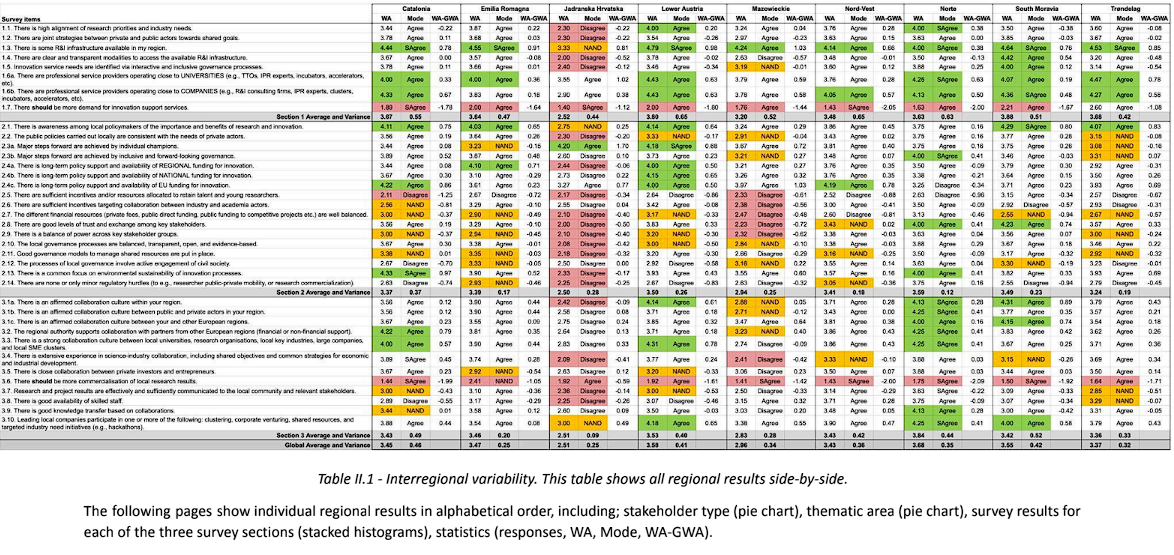
Catalonia (ES)
1.01 Stakeholder Type
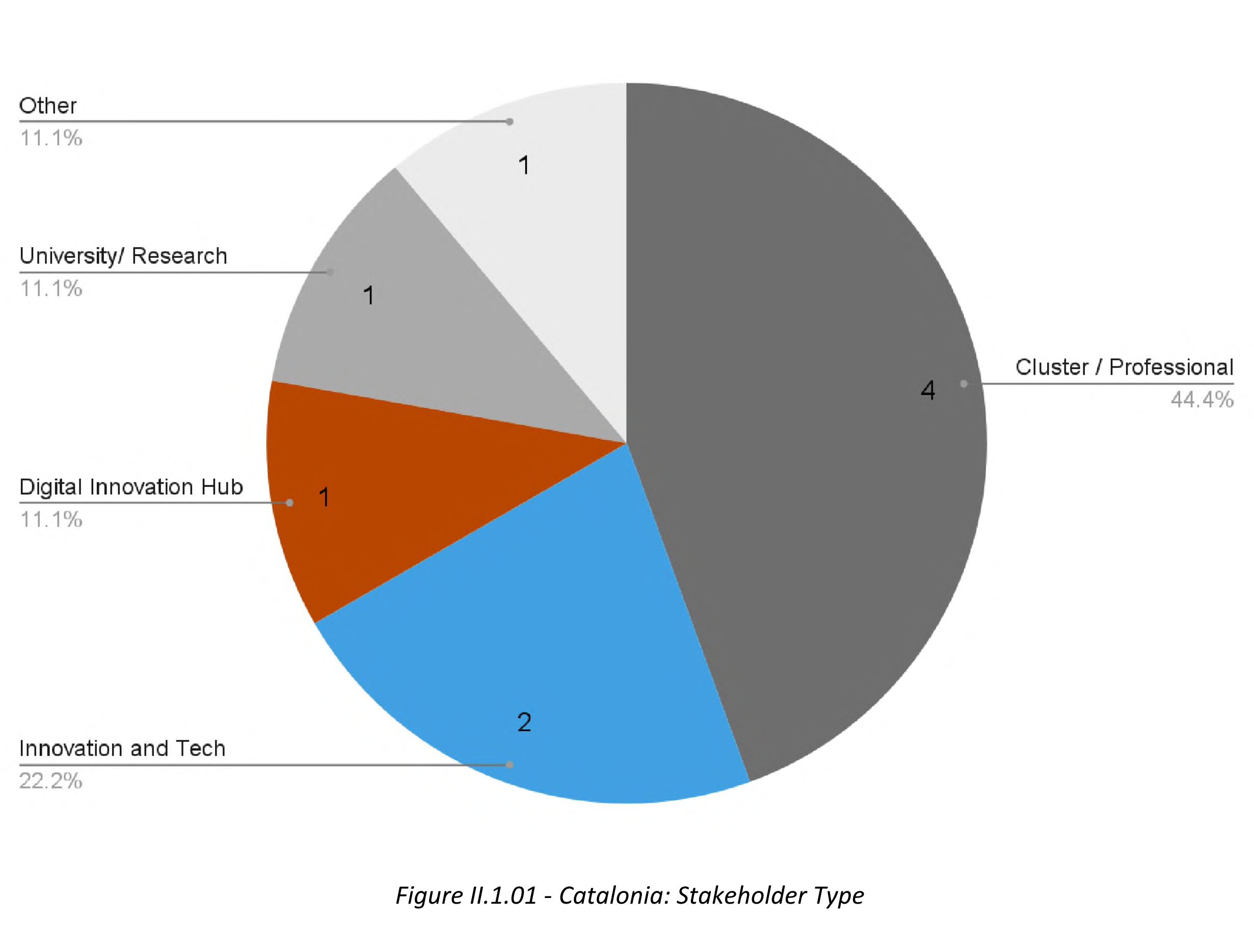
1.02 Thematic Area
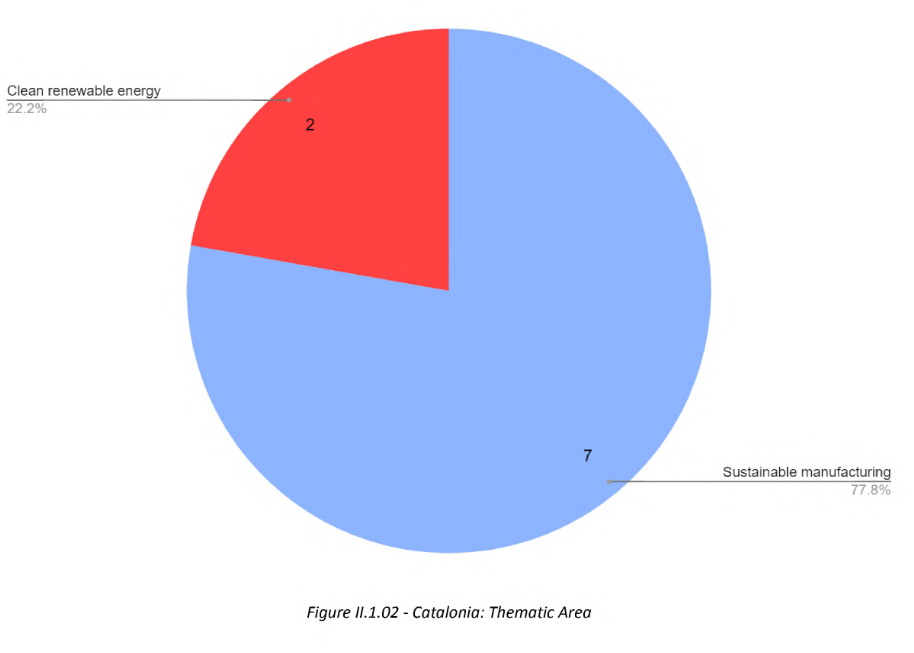
1.1 Access to R&I Infrastructure and Services
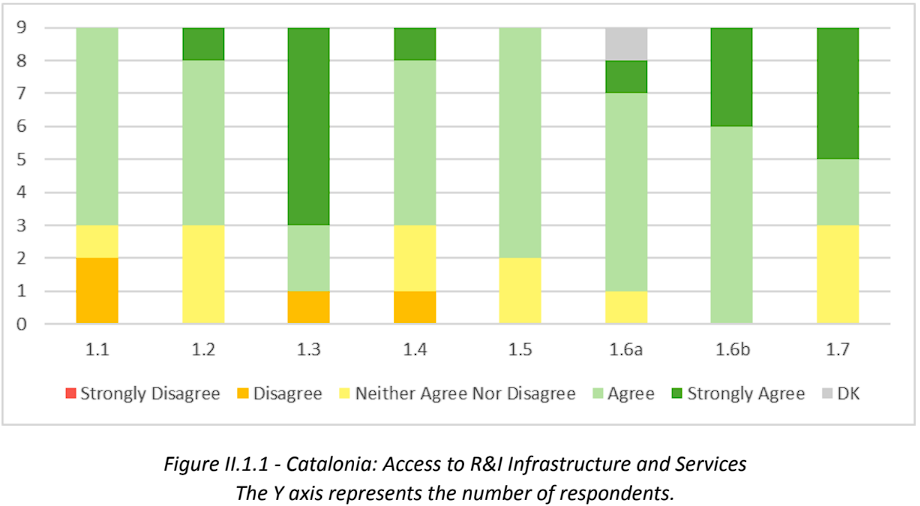
1.2 Policy Support and Governance Processes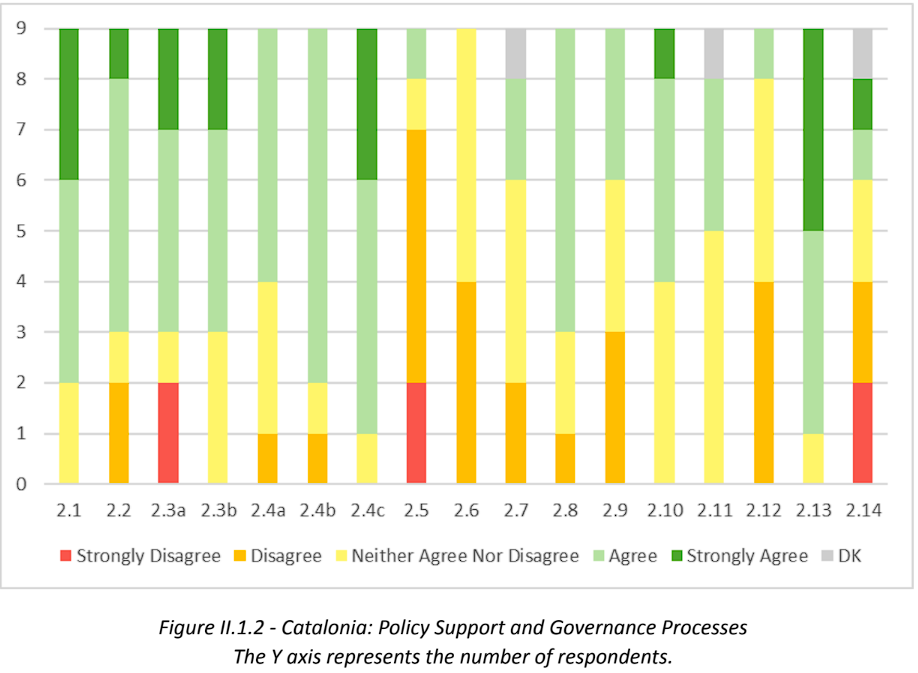
1.3 Collaboration and Knowledge Transfer
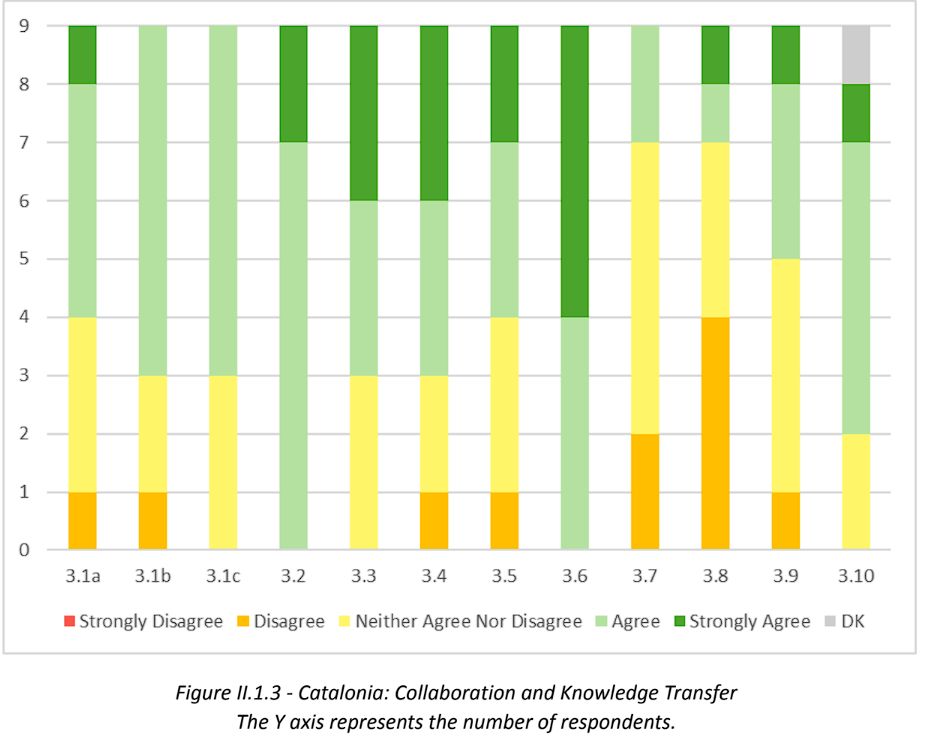
2. Emilia-Romagna (IT)
2.01 Stakeholder Type
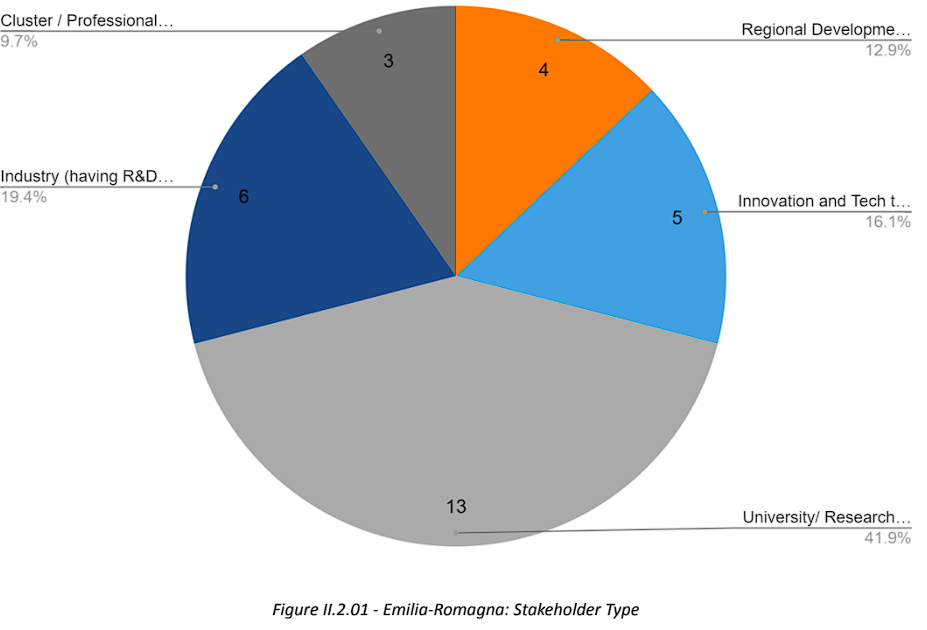
2.02 Thematic Area

2.1 Access to R&I Infrastructure and Services
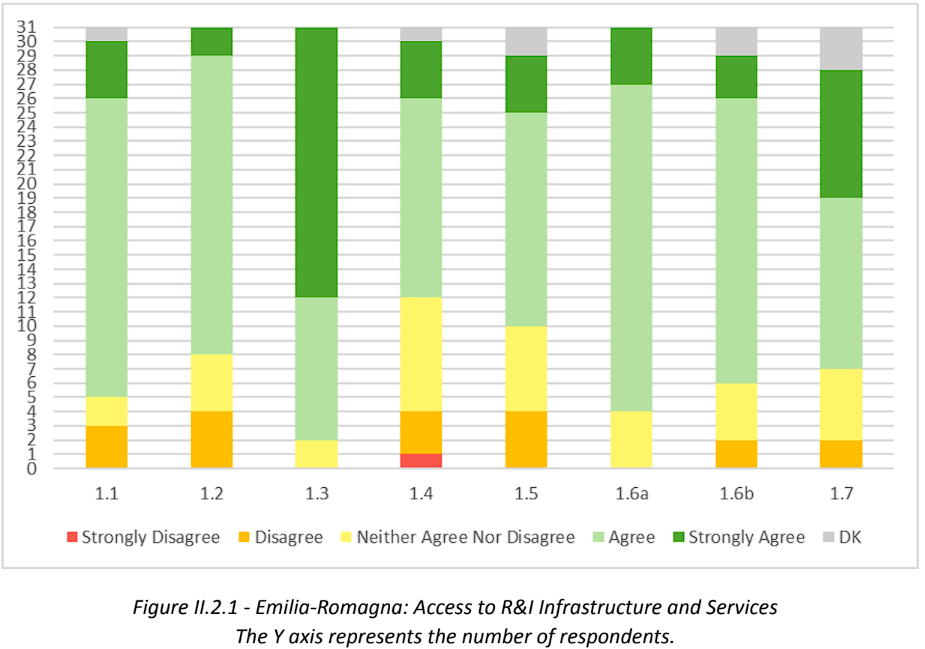
2.2 Policy Support and Governance Processes
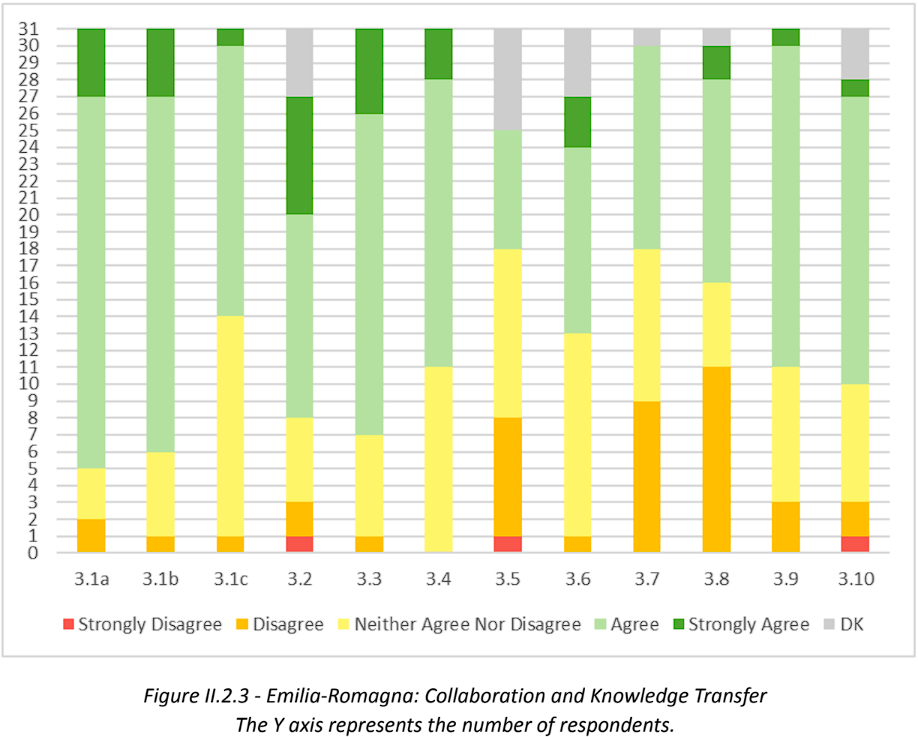
2.3 Collaboration and Knowledge Transfer
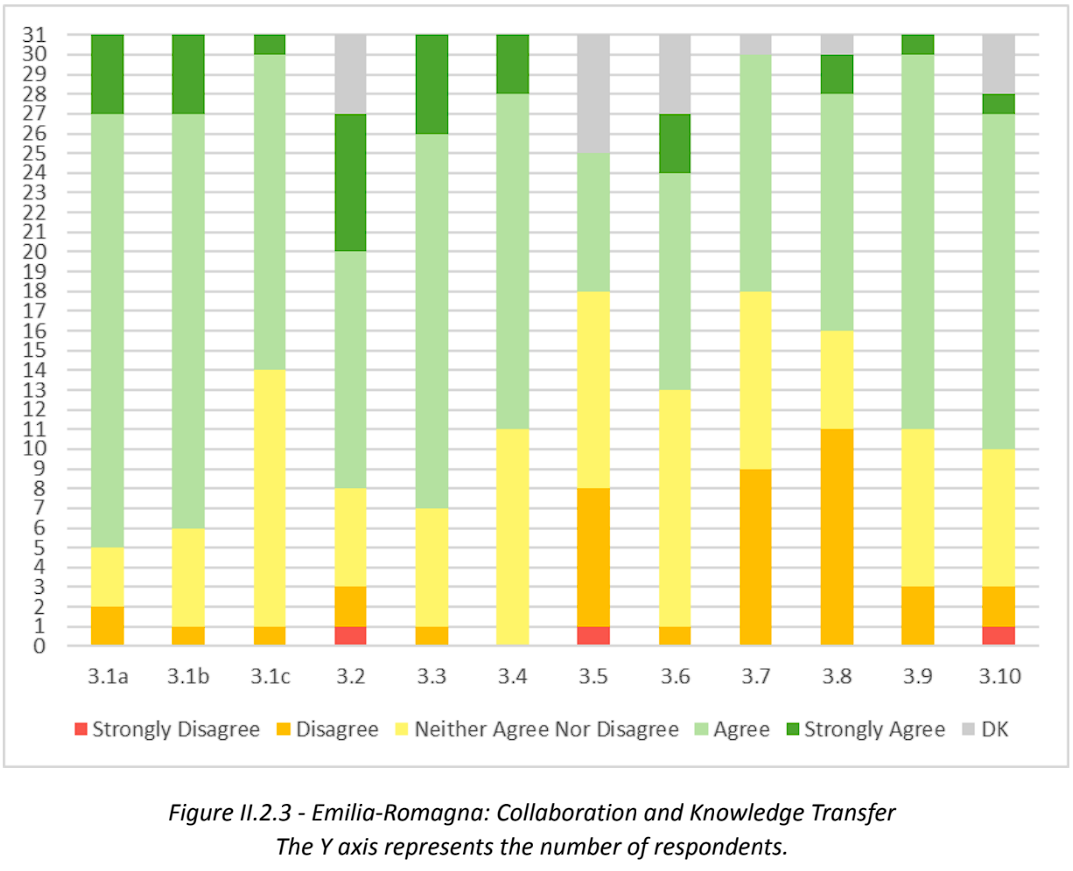
3. Jadranska Hrvatska (HR)
3.01 Stakeholder Type
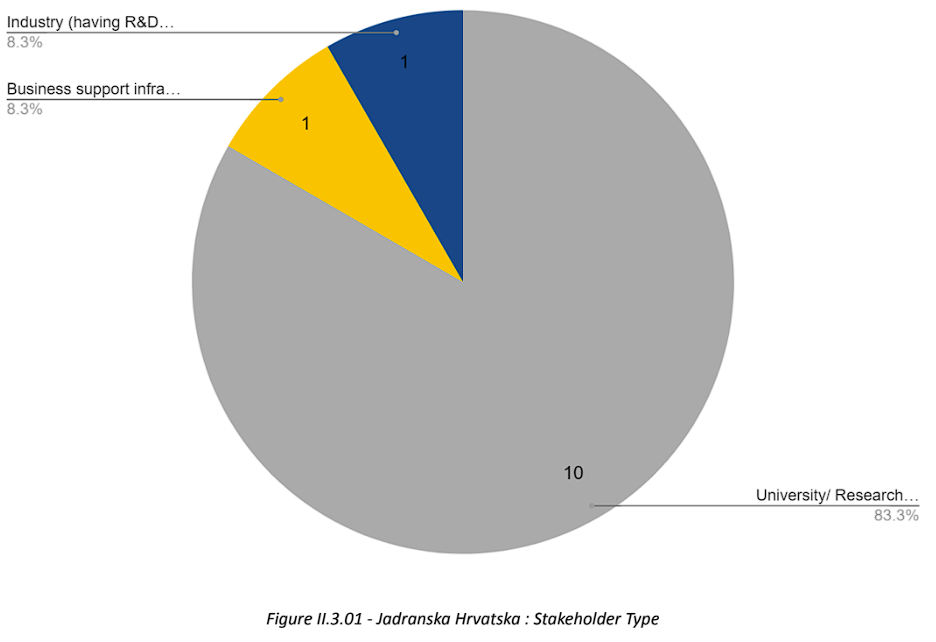
3.02 Thematic Area
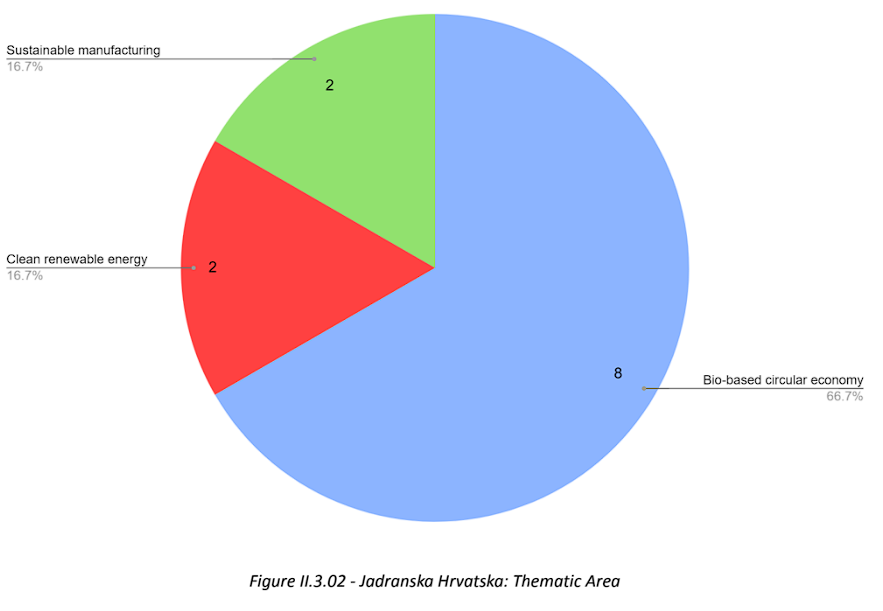
3.1 Access to R&I Infrastructure and Services

3.2 Policy Support and Governance Processes

3.3 Collaboration and Knowledge Transfer

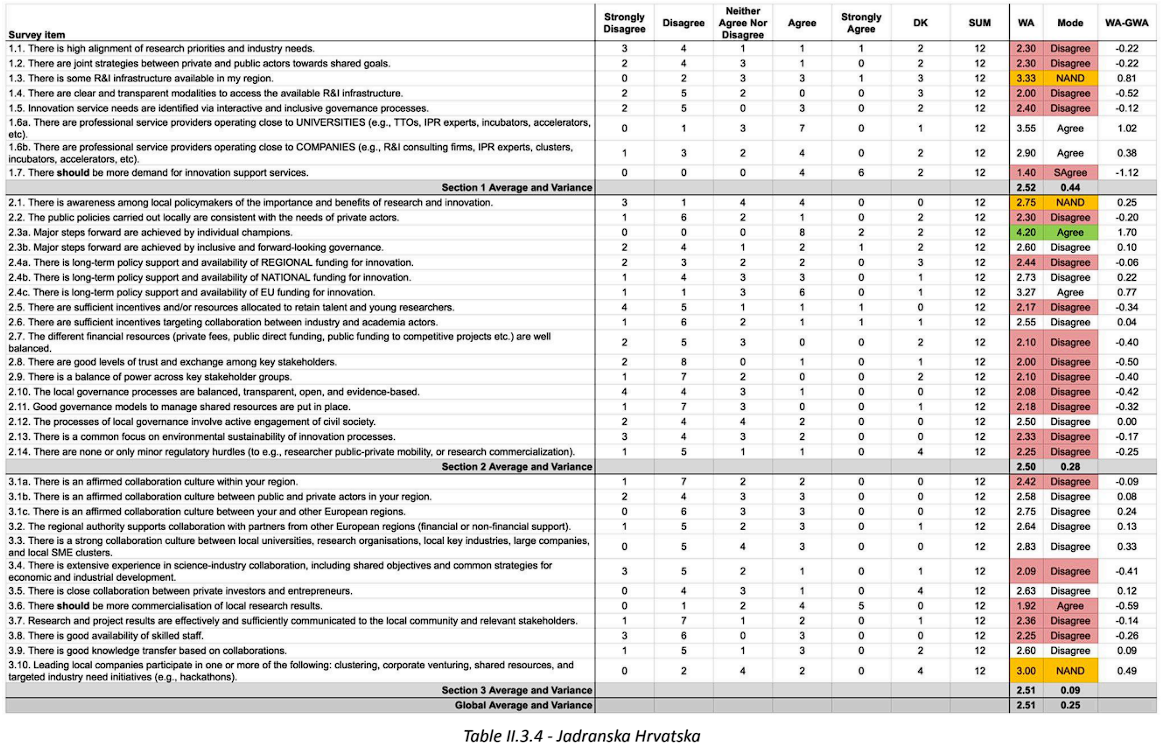
4. Lower Austria (AT)
4.01 Stakeholder Type
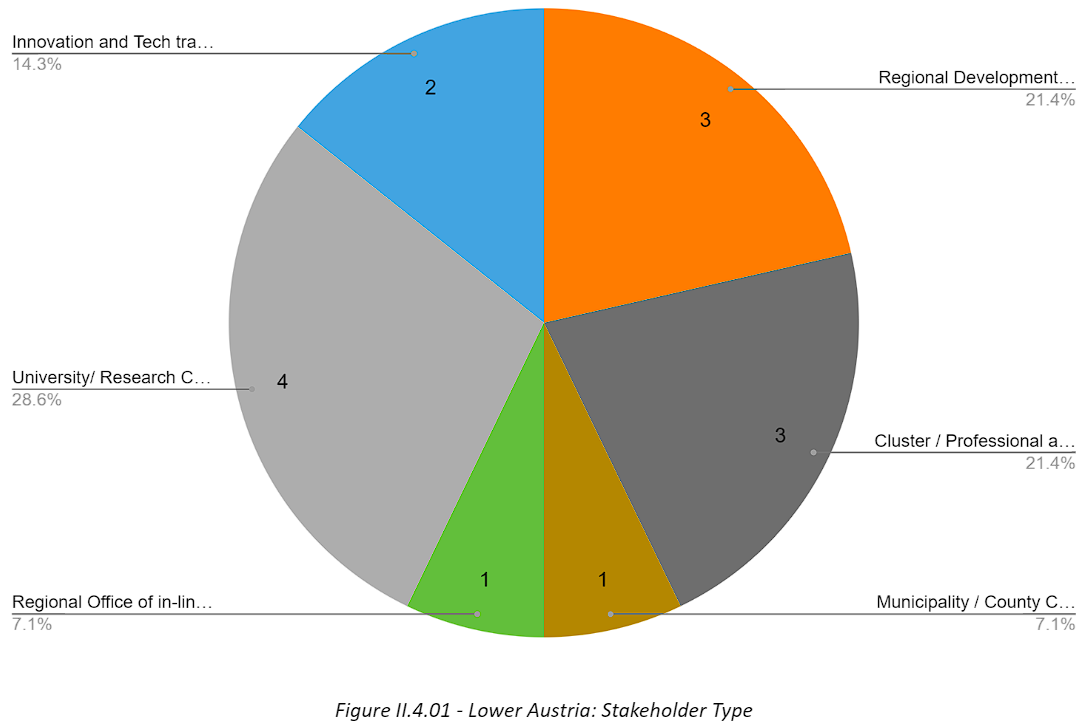
4.02 Thematic Area
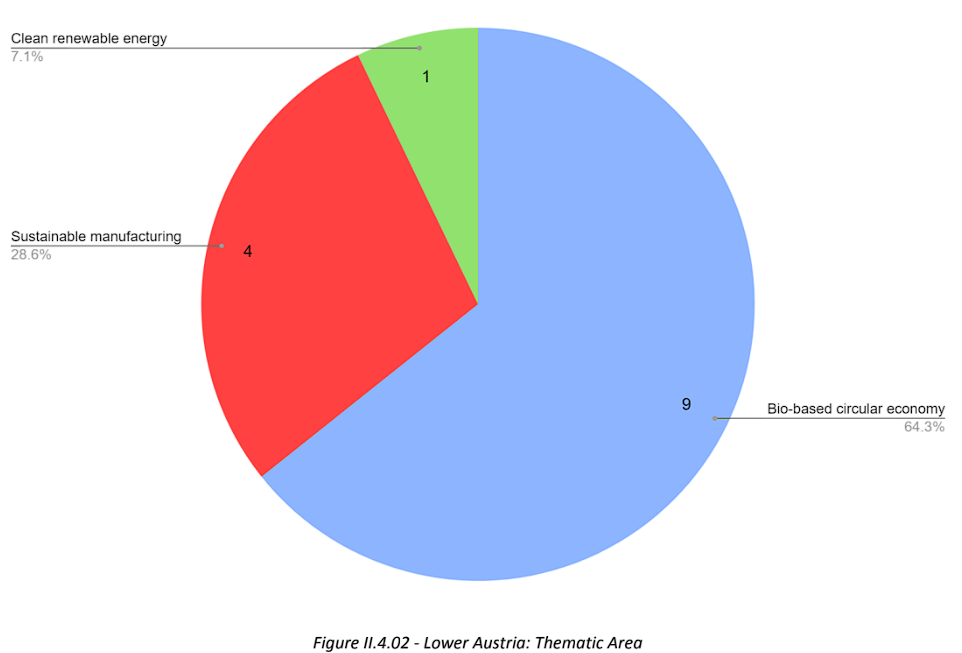
4.1 Access to R&I Infrastructure and Services
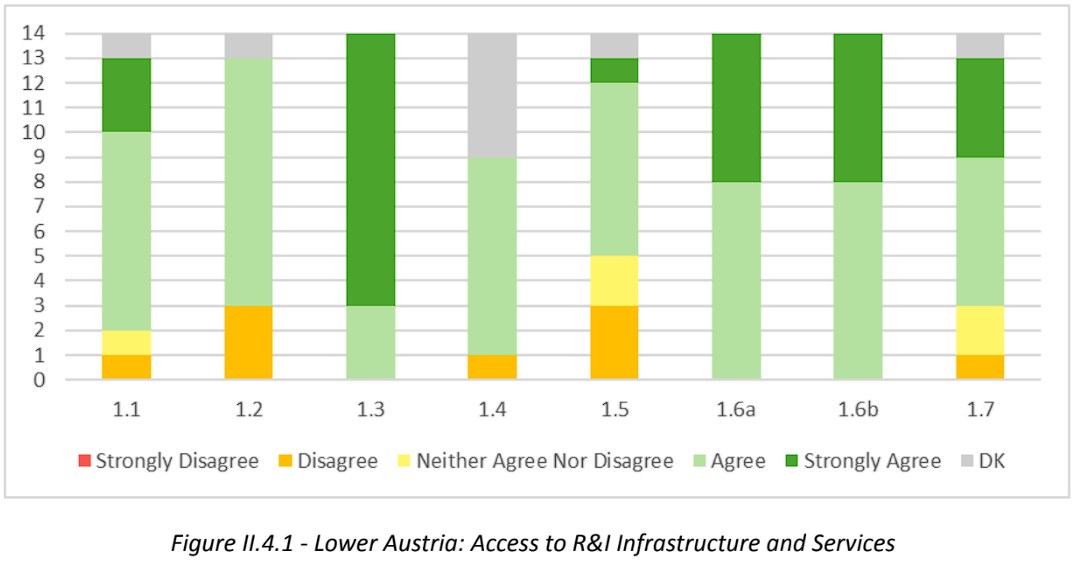
4.2 Policy Support and Governance Processes

4.3 Collaboration and Knowledge Transfer
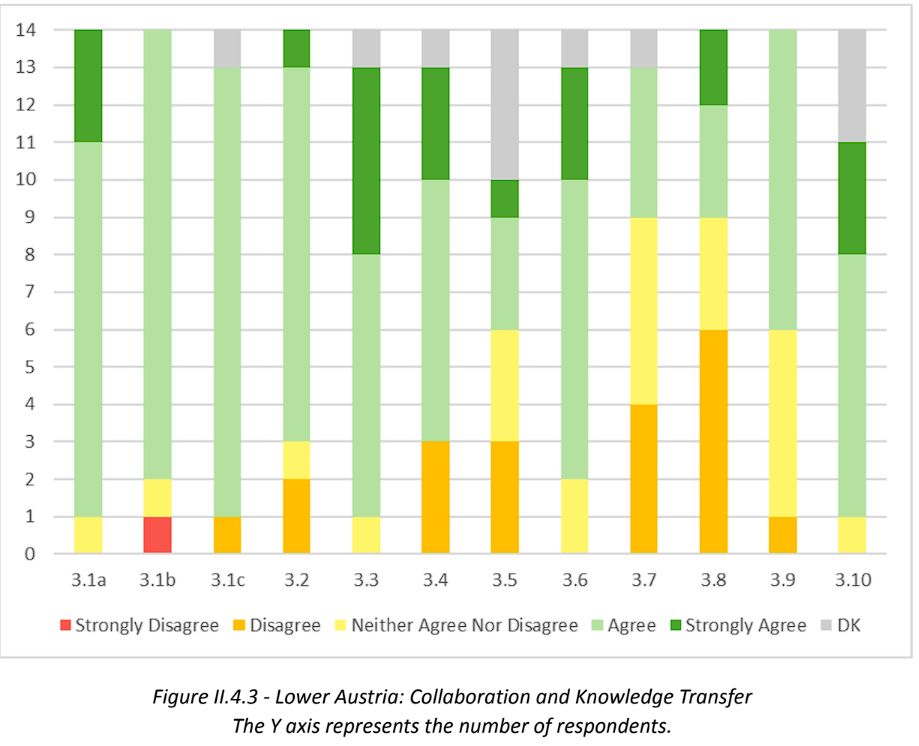
5. Mazowieckie (PL)
5.01 Stakeholder Type
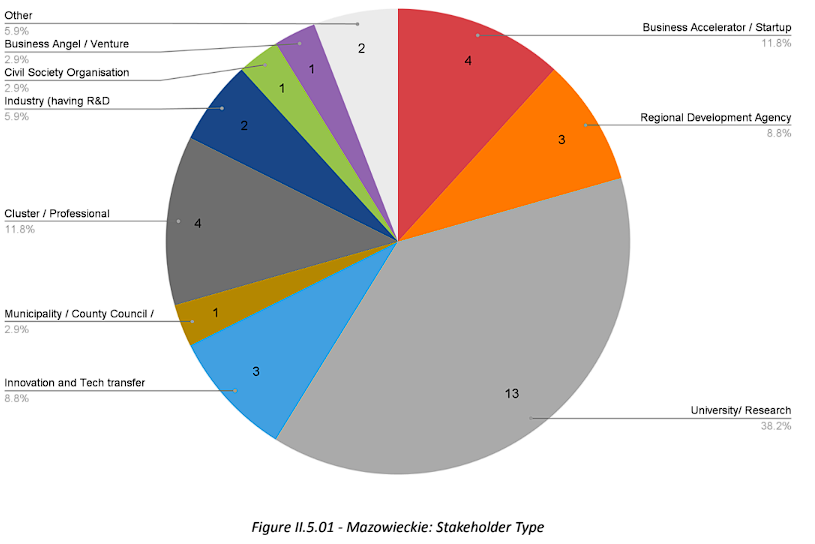
5.02 Thematic Area

5.1 Access to R&I Infrastructure and Services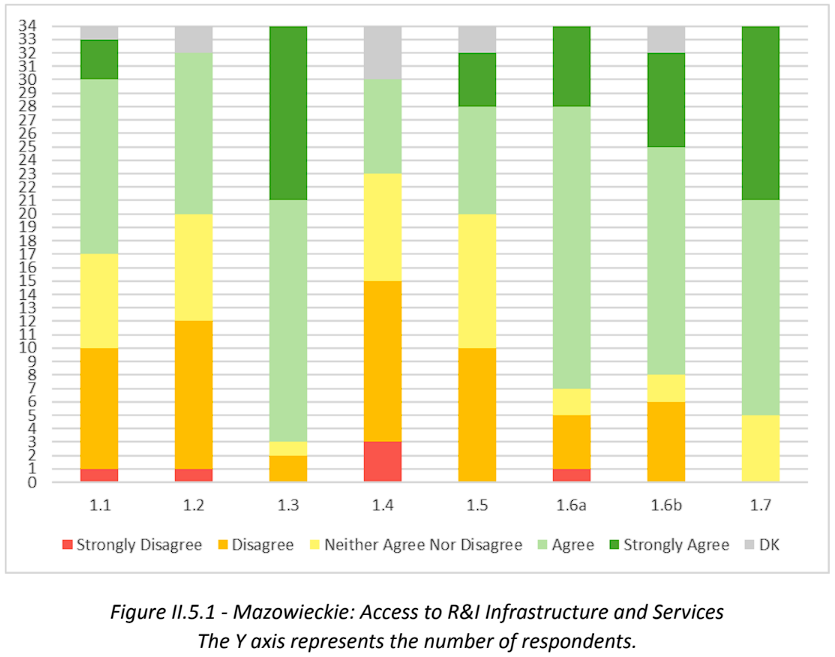
5.2 Policy Support and Governance Processes
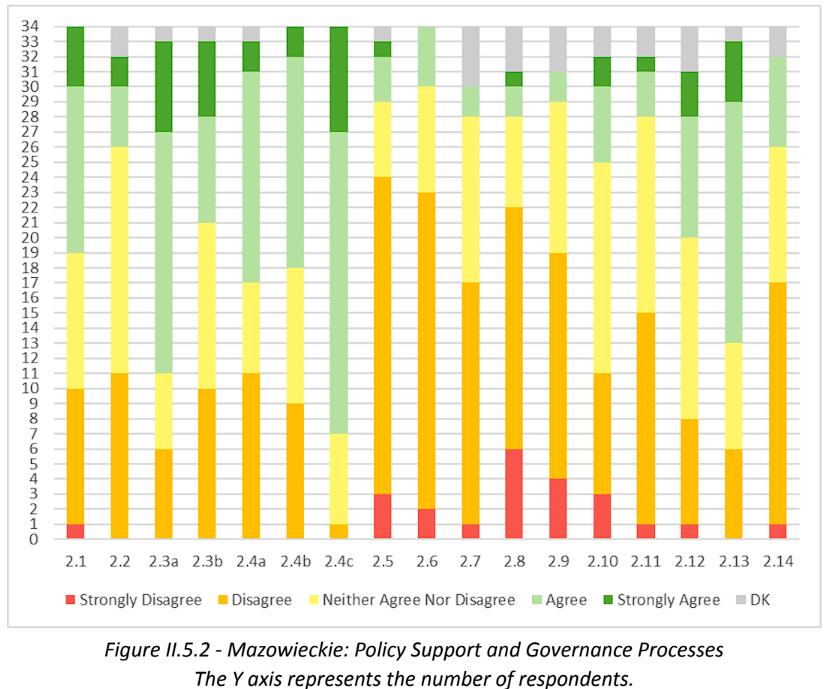
5.3 Collaboration and Knowledge Transfer
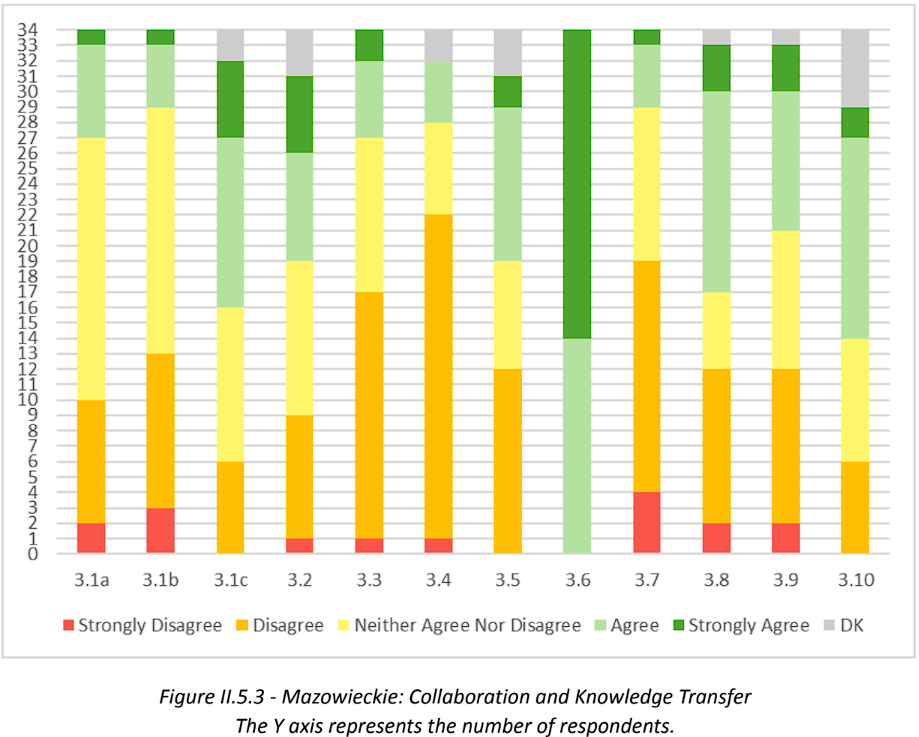
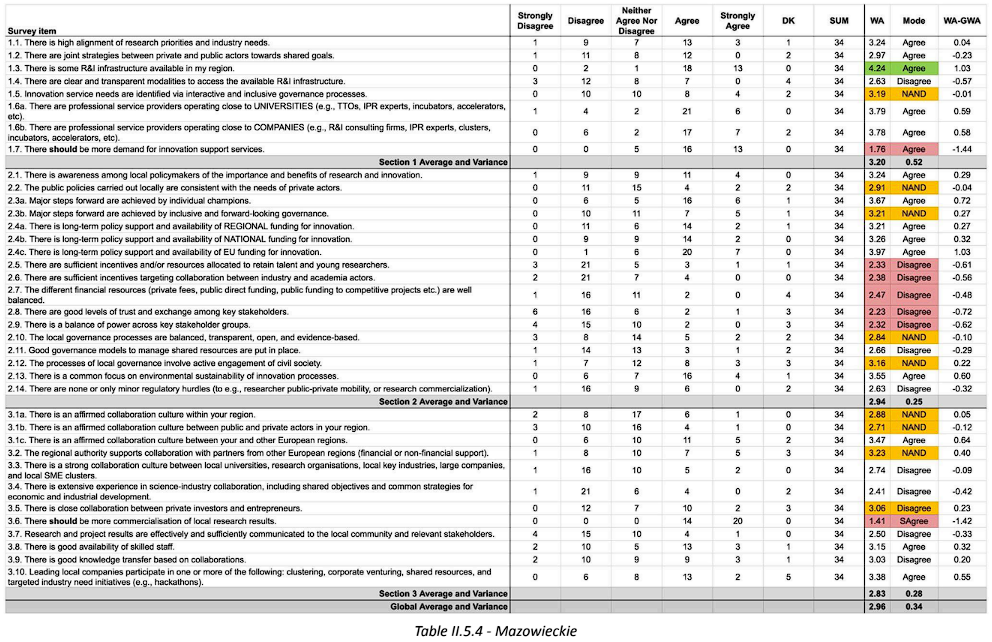
6. Nord-Vest (RO)
6.01 Stakeholder Type
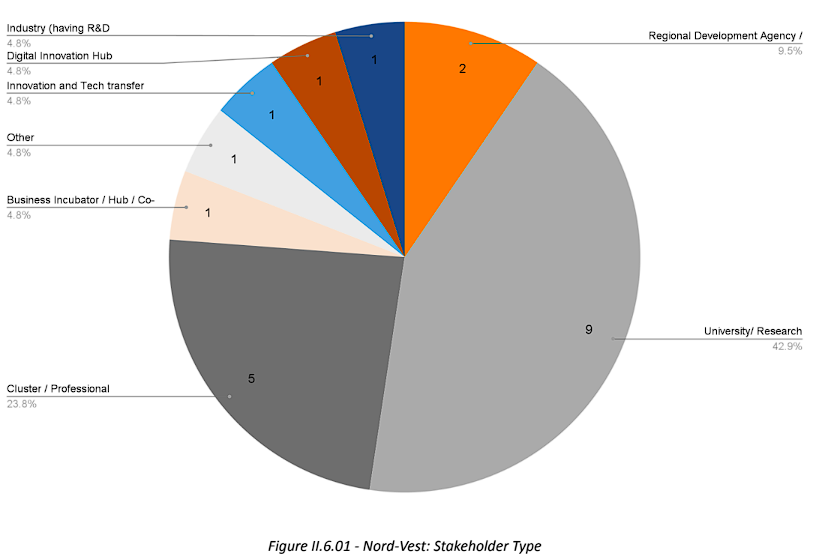
6.02 Thematic Area
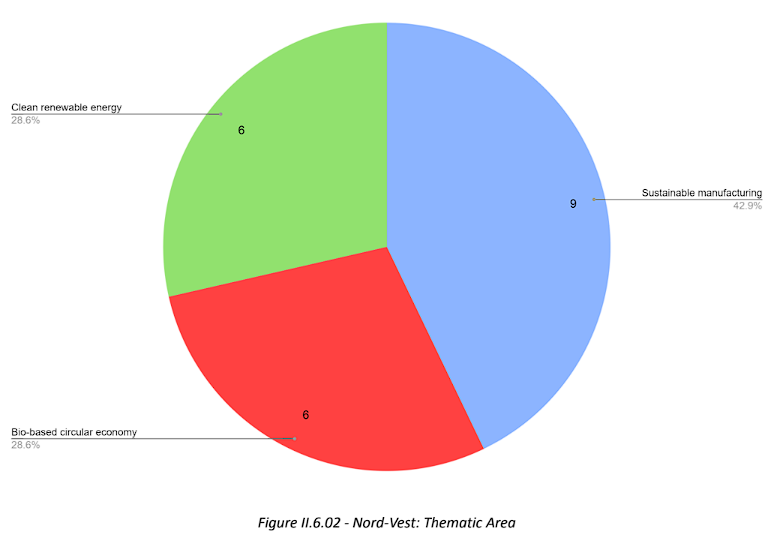
6.1 Access to R&I Infrastructure and Services

6.2 Policy Support and Governance Processes

6.3 Collaboration and Knowledge Transfer

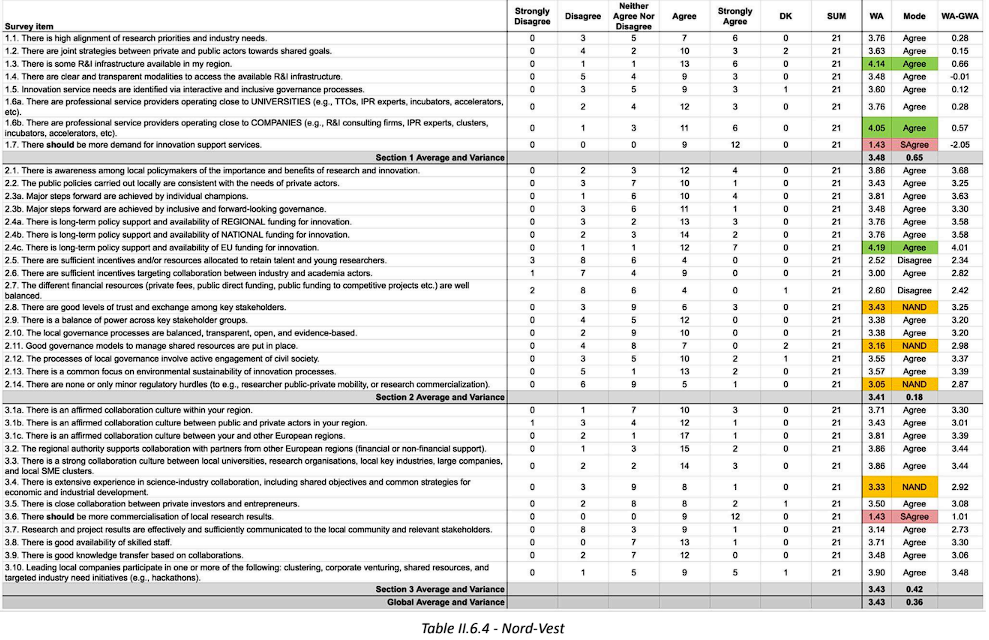
7. Norte (PT)
7.01 Stakeholder Type
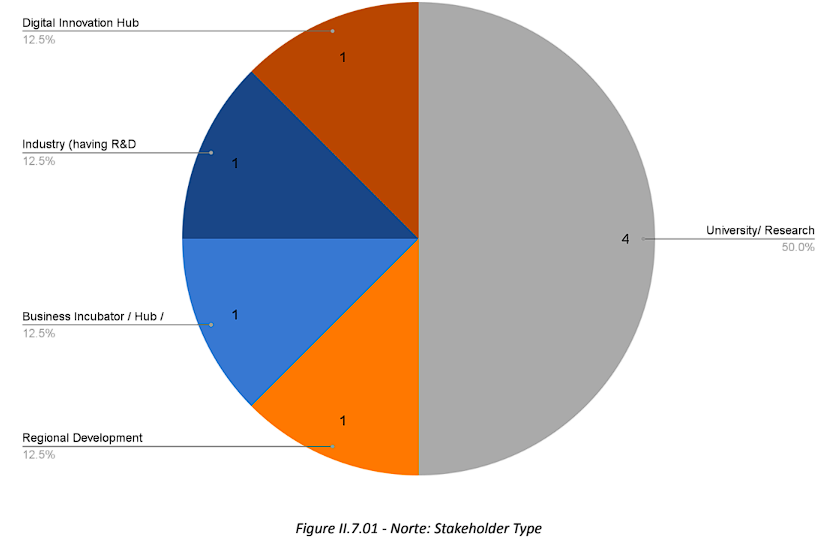
7.02 Thematic Area
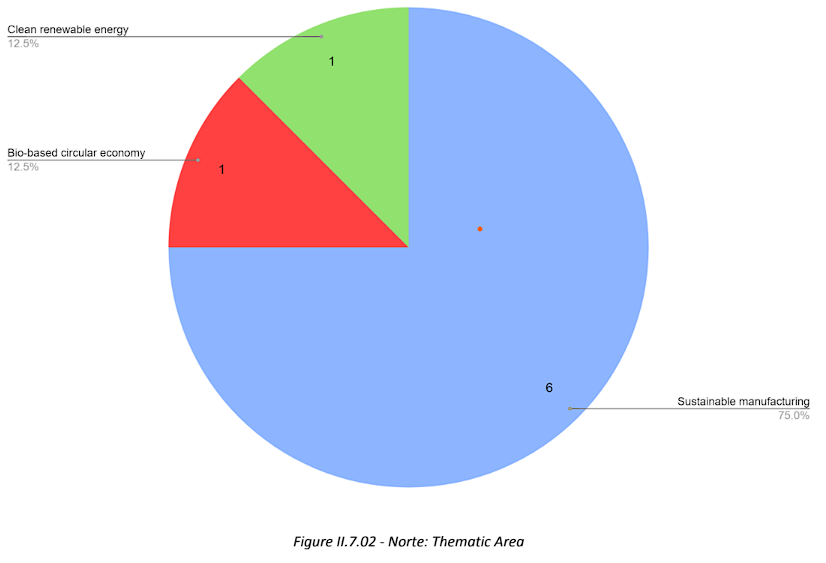
7.1 Access to R&I Infrastructure and Services
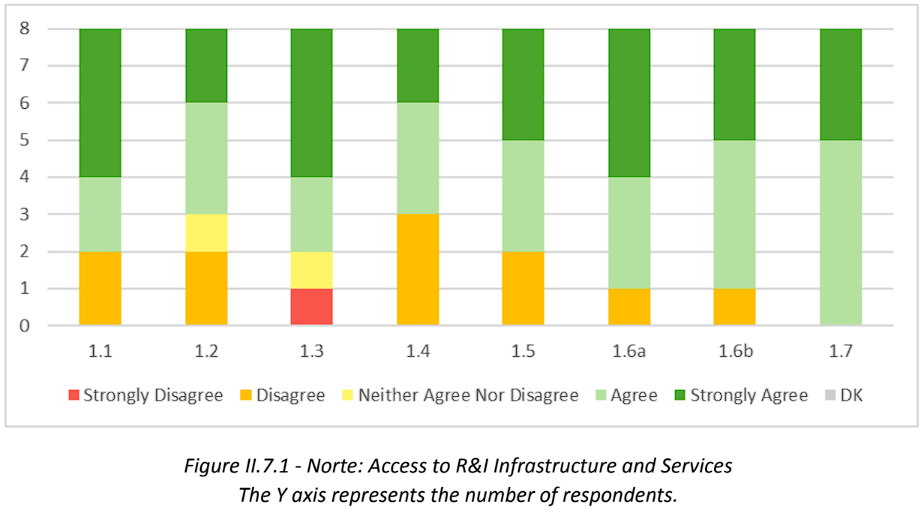
7.2 Policy Support and Governance Processes
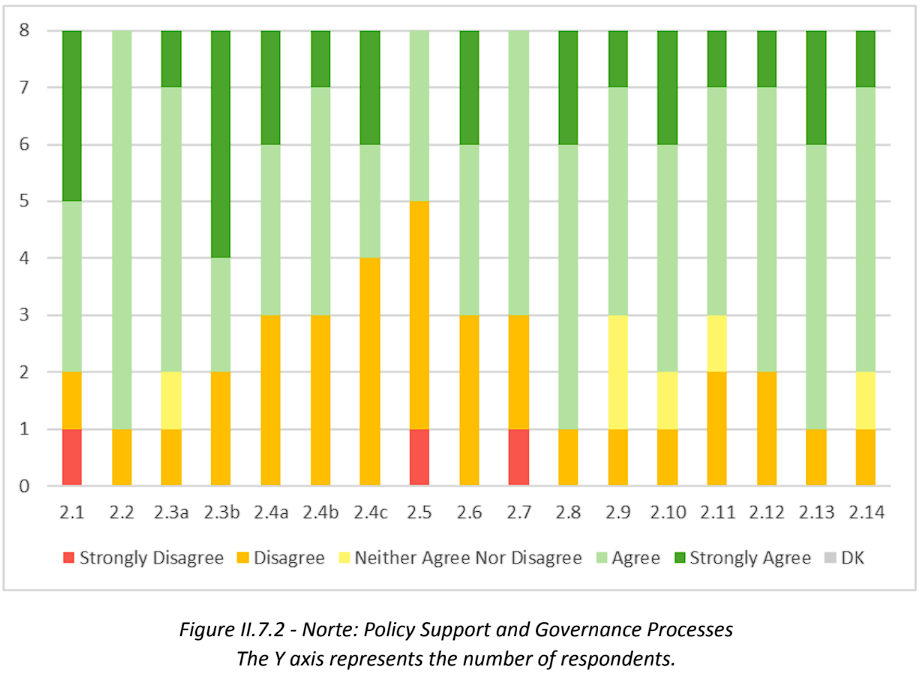
7.3 Collaboration and Knowledge Transfer
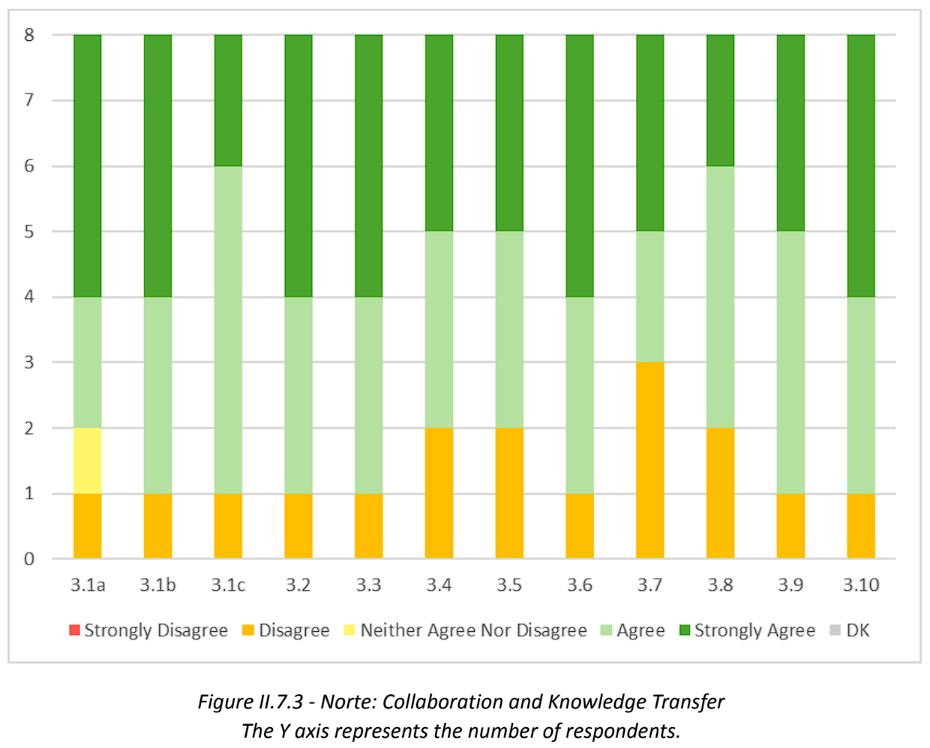
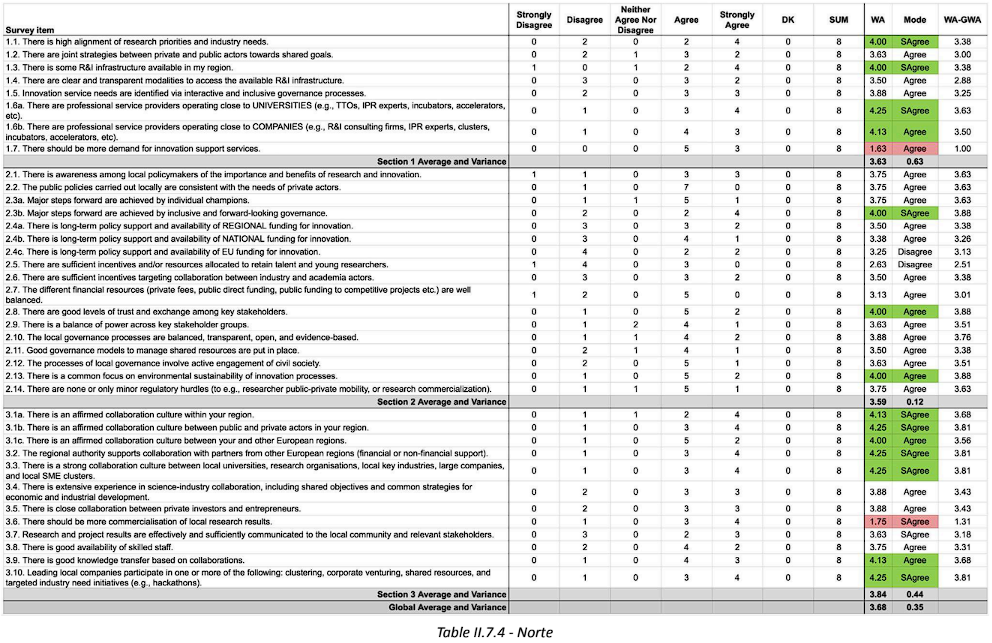
8. South Moravia (CZ)
8.01 Stakeholder Type
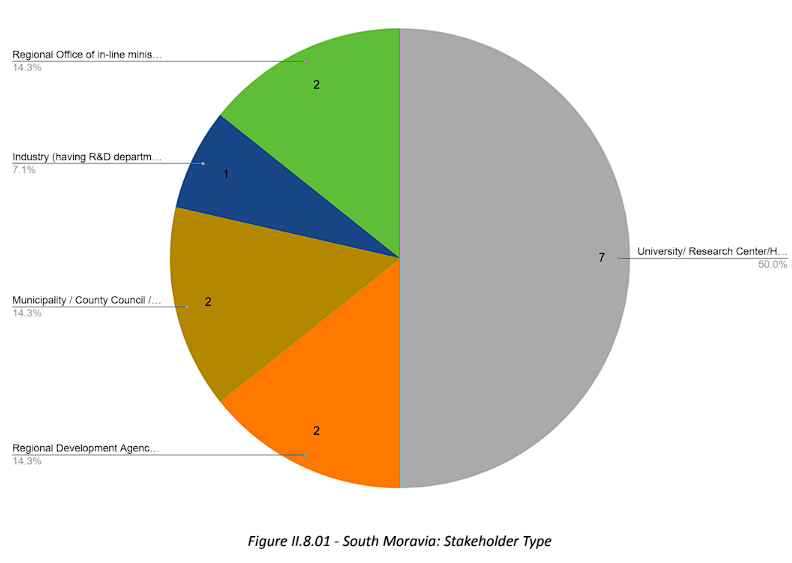
8.02 Thematic Area
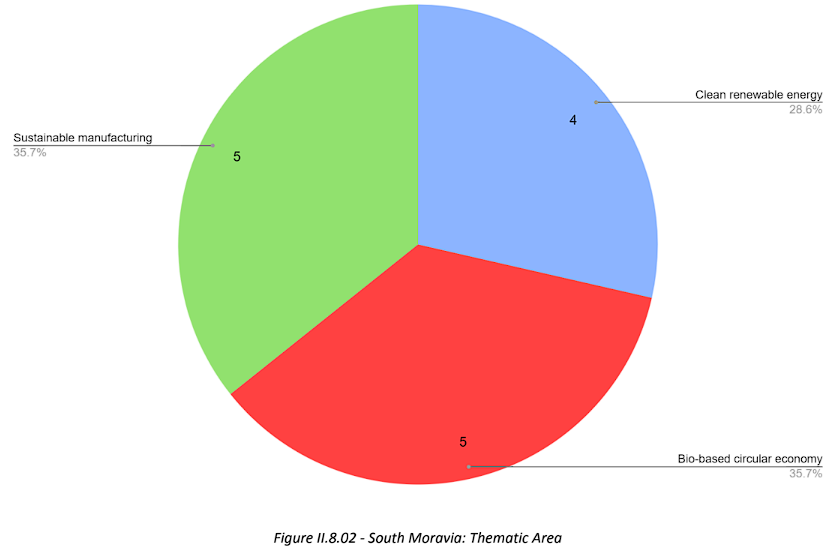
8.1 Access to R&I Infrastructure and Services
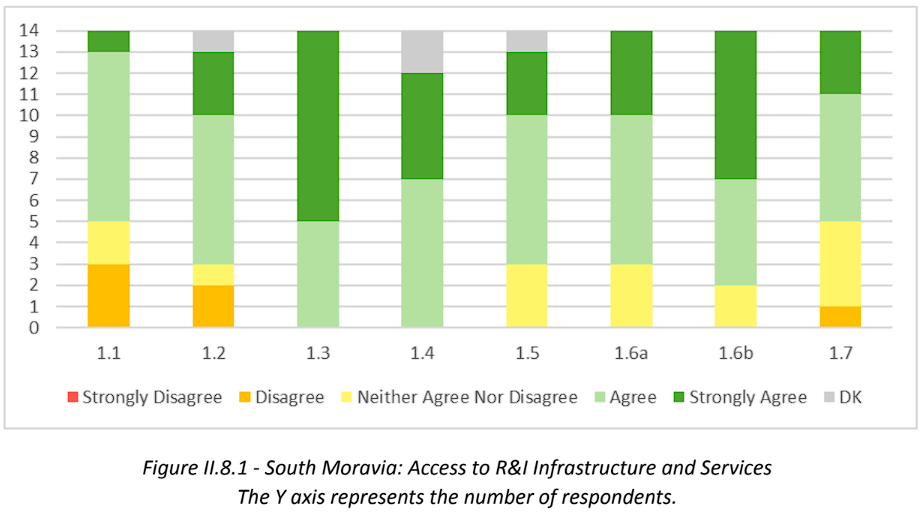
8.2 Policy Support and Governance Processes
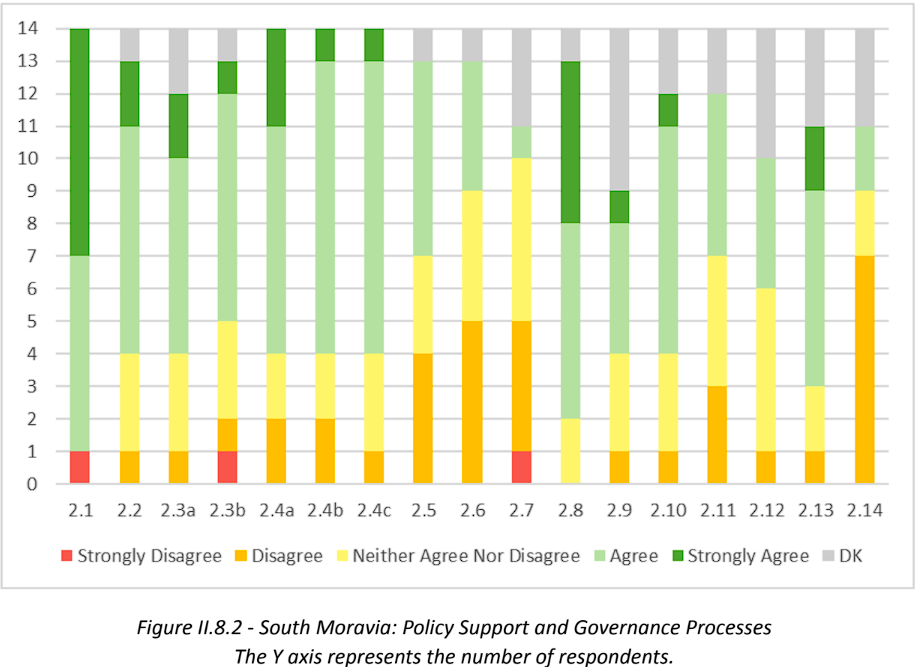
8.3 Collaboration and Knowledge Transfer
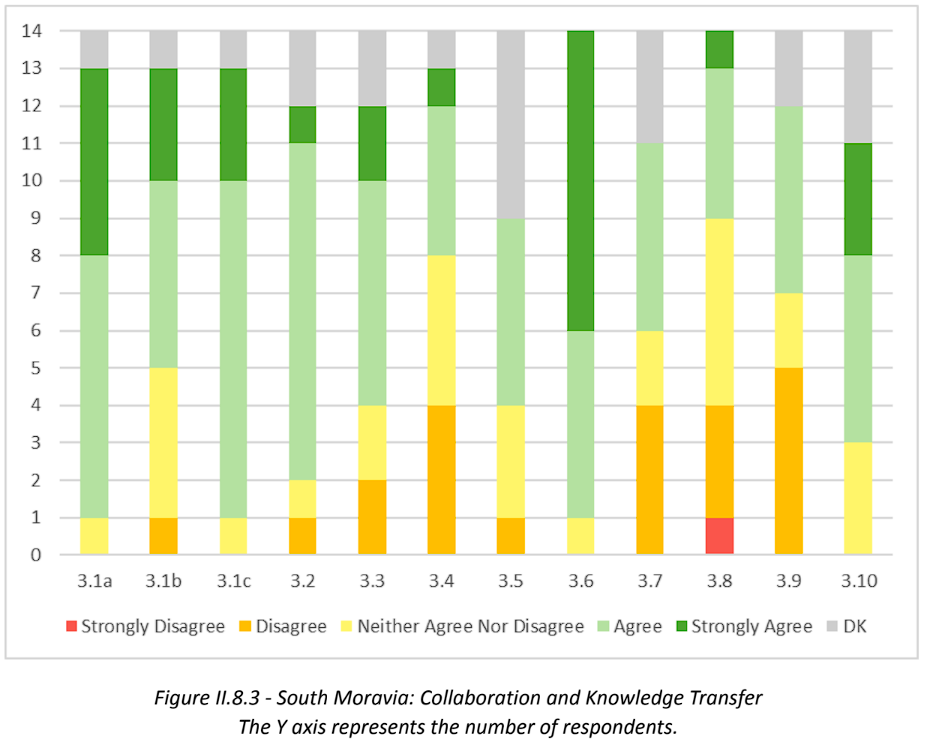
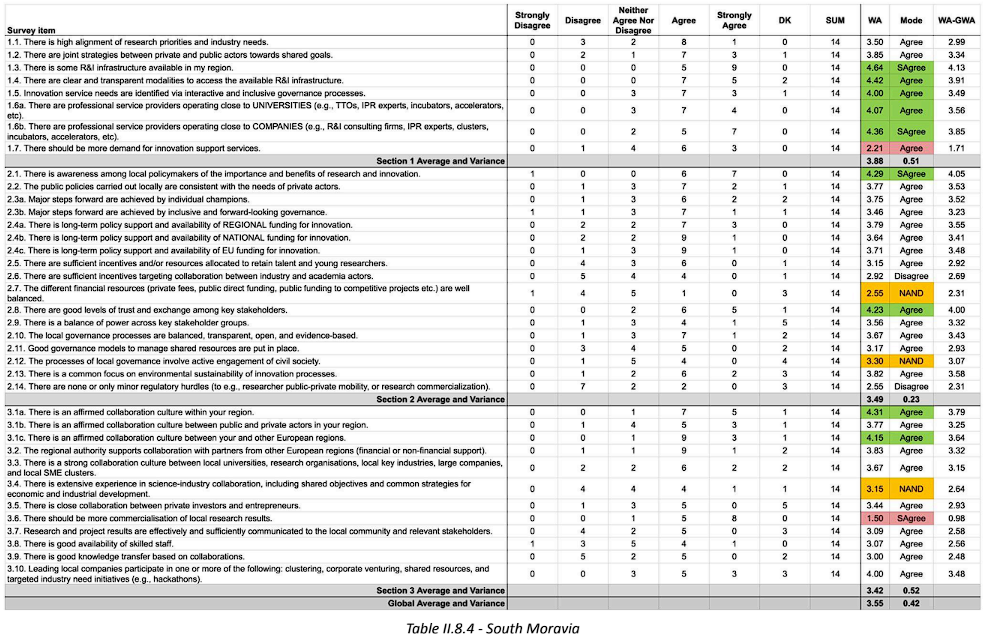
9. Trøndelag (NO)
9.01 Stakeholder Type

9.02 Thematic Area
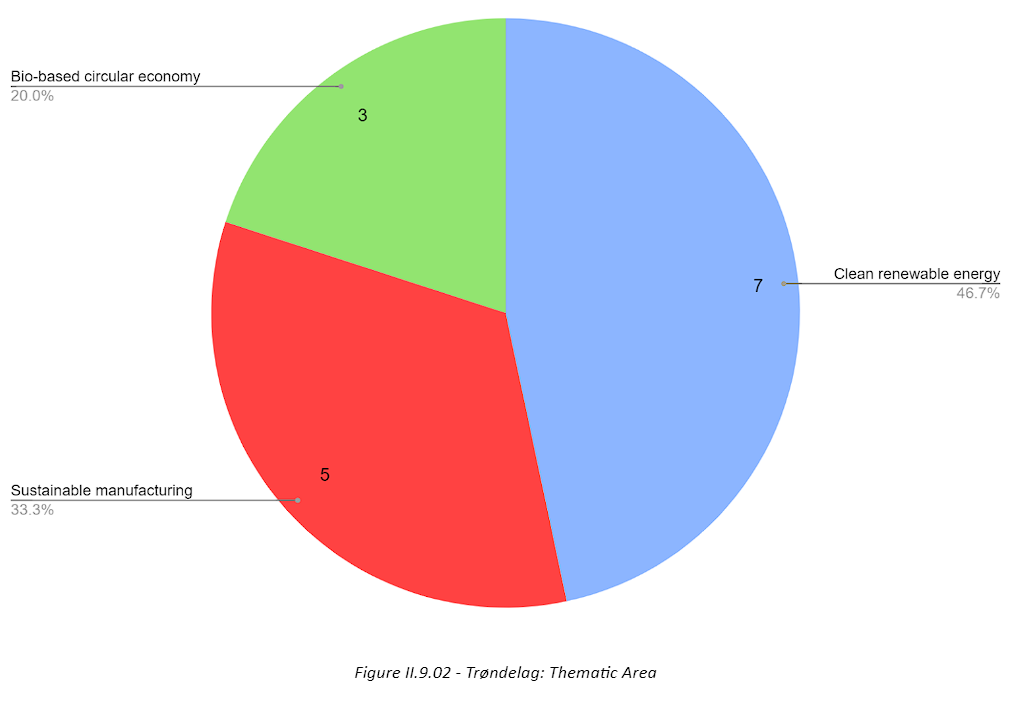
9.1 Access to R&I Infrastructure and Services
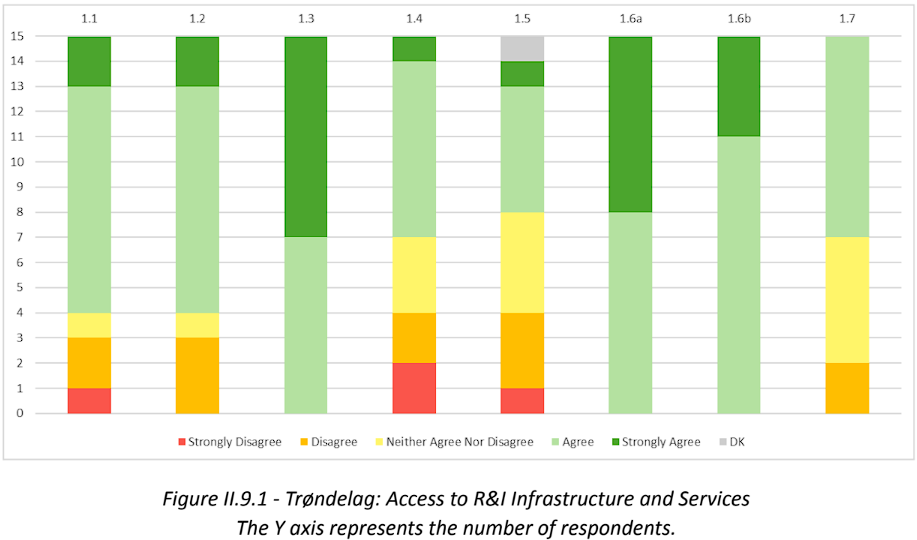
9.2 Policy Support and Governance Processes

9.3 Collaboration and Knowledge Transfer
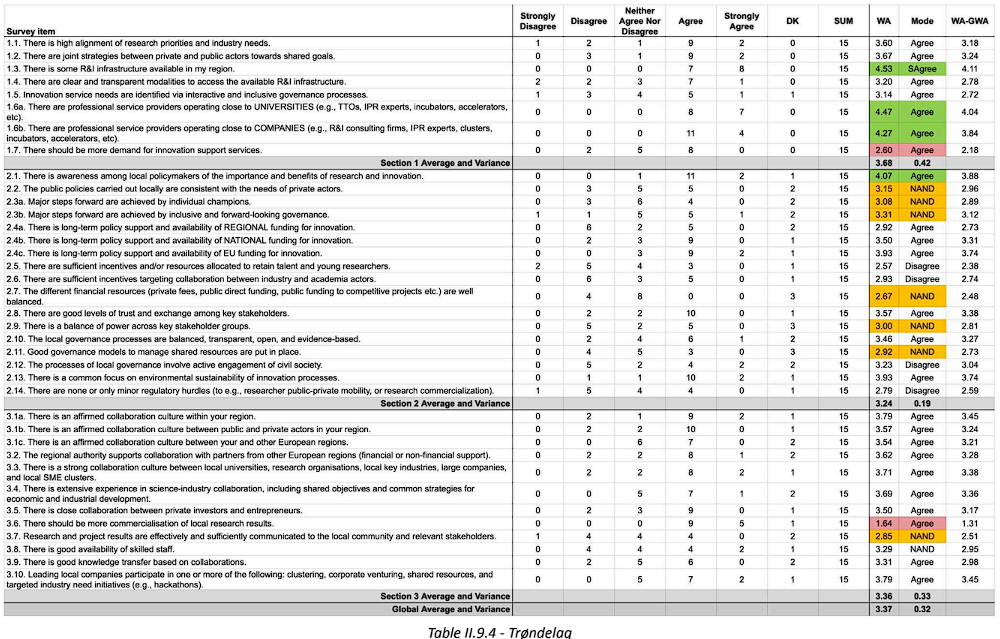
10. Other European Regions
The ‘Other’ section is an amalgamated set of responses from stakeholders who completed the survey
but do not originate from any of the 9 partner regions, namely;
● Eastern Austria (AT) – 1
● Denmark (DK) – 1
● Andalusia (ES) – 2
● Extremadura (ES) – 1
● Piemonte (IT) – 1
● Noord-Brabant (NL) – 1
● Noord-Holland (NL) – 1
● Zuid-Holland (NL) – 1
● Łodzkie (PL) – 1
● Central Ukraine (UA) – 1
The following pages show grouped results for the 10 aforementioned regions, including; stakeholder
type (pie chart), thematic area (pie chart), survey results for each of the three survey sections
(stacked histograms).
In view of the very limited regional samples, statistics (WA, Mode, WA-GWA) will not be presented.
10.01 Stakeholder Type
10.02 Thematic Area
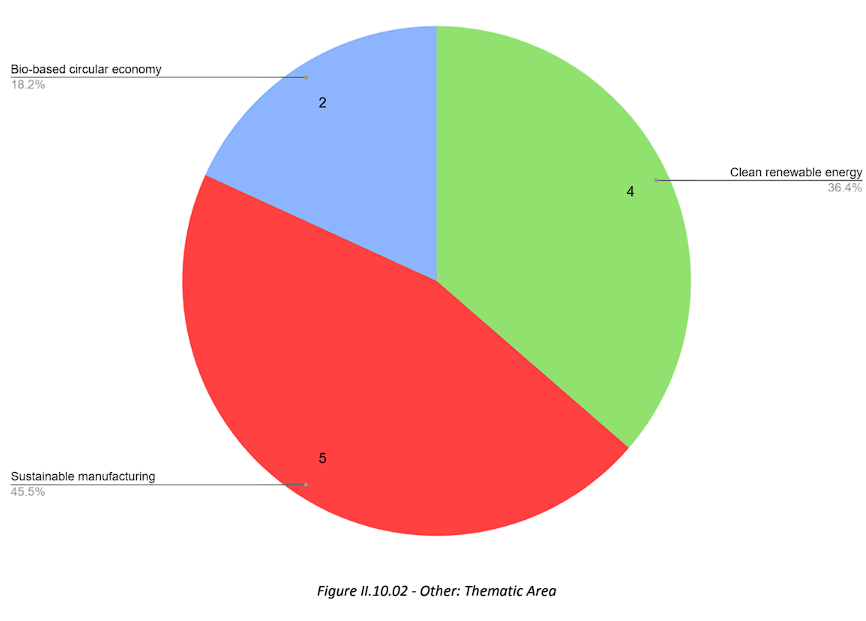
10.1 Access to R&I Infrastructure and Services
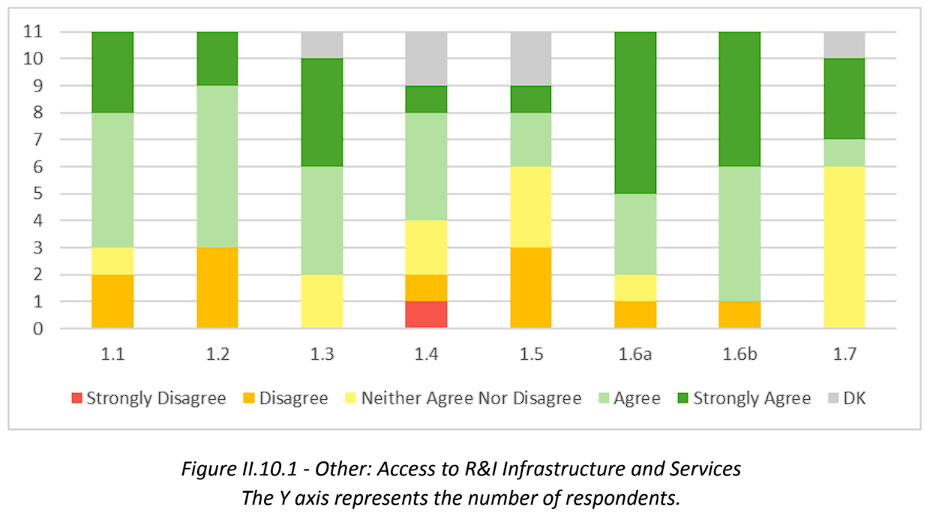
10.2 Policy Support and Governance Processes
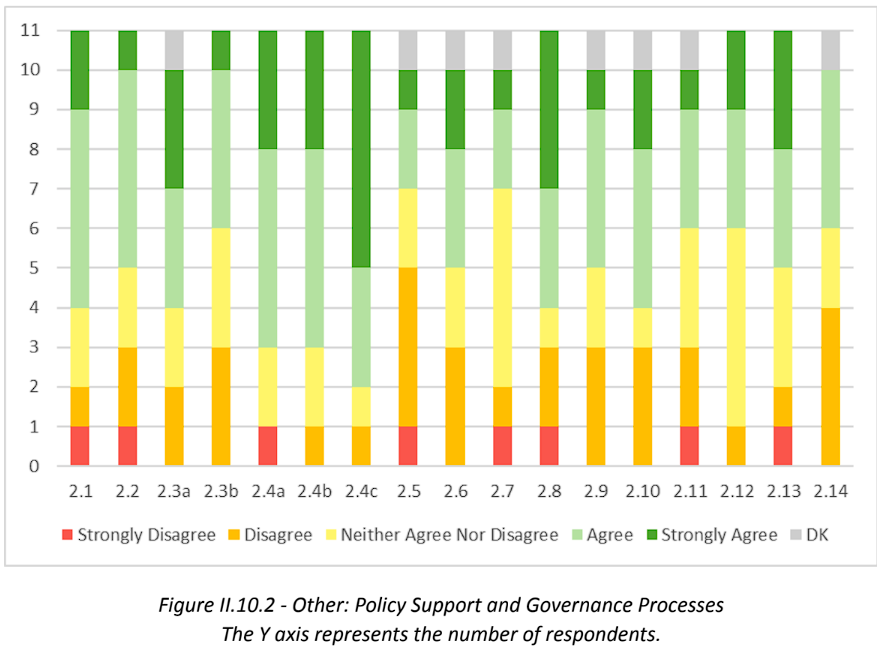
10.3 Collaboration and Knowledge Transfer
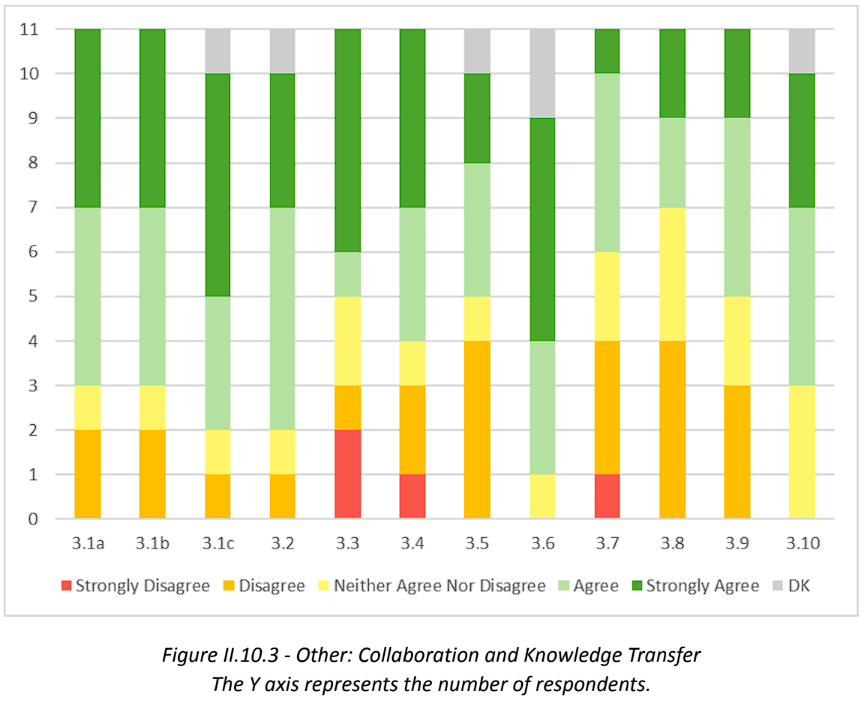
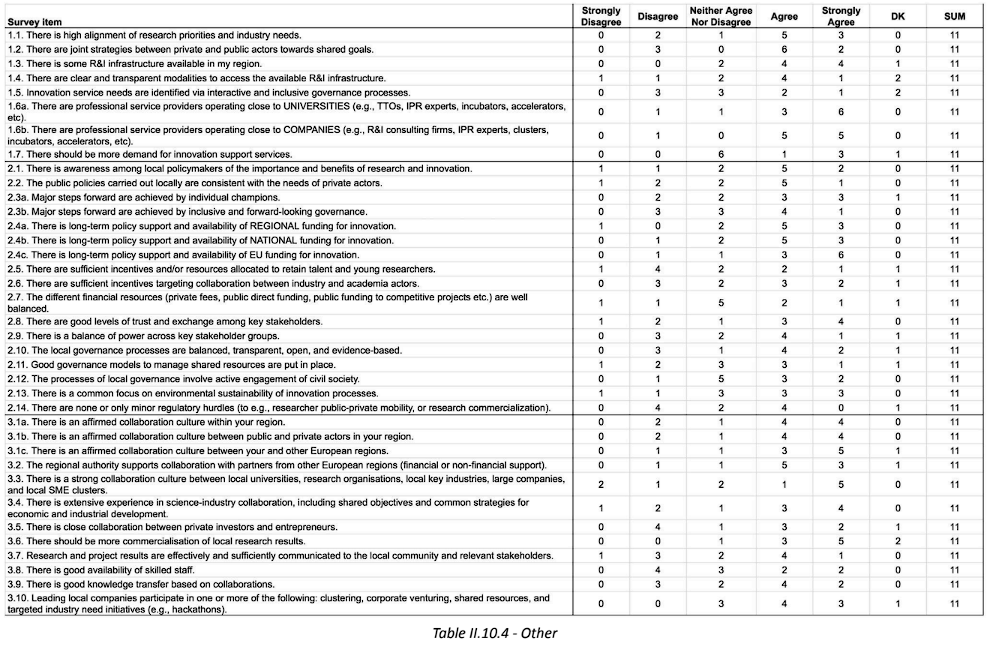
III. Main Findings Data Breakdown
This annex dwells on the individual questions that relate to the knowledge ecosystems’ characteristics defined by our hypothesis. In particular, focus has been placed on stakeholders agreeing or strongly agreeing with the statements.
This data set includes responses from ‘Other’ regions.
1. Territorial vocation
A set of survey statements referred explicitly to regional structures and interactions; 1.3, 2.4a, 3.1a,b,
3.2. The statements dwelled on the regional availability of infrastructure, funding, and collaboration both within and outside the region:
- [1.3] 88% of the respondents either agreed or strongly agreed with there being some
available R&I infrastructure available in their region; - [2.4a] 61% of the respondents either agreed or strongly agreed with there being long-term policy support and funding at the regional level;
- [3.1a] 61% of the respondents either agreed or strongly agreed with there being an affirmed collaboration culture within their region;
- [3.1b] 57% of the respondents either agreed or strongly agreed with there being an affirmed collaboration culture between private and public actors within their region;
- [3.2] 62% of the respondents either agreed or strongly agreed with their regional authority supporting collaboration with other EU regions.
2. Multi-level governance process
A different set of survey statements referred explicitly to multi-level governance processes; 1.5, 2.3b, 2.10, 2.11, 2.12, 2.14. The stakeholders showed the following reactions to these statements:
- [1.5] 51% of the respondents either agreed or strongly agreed with there being interactive
and inclusive governance processes to identify innovation service needs; - [2.3b] 53% of the respondents either agreed or strongly agreed that within their region major steps forward are achieved by inclusive and forward-looking governance;
- [2.10] 40% of the respondents either agreed or strongly agreed with there being balanced, transparent, open and evidence-based local governance processes;
- [2.11] 29% of the respondents either agreed or strongly agreed with good governance models being in place to manage shared resources;
- [2.12] 38% of the respondents either agreed or strongly agreed with local governance actively engaging civil society;
- [2.14] 23% of the respondents either agreed or strongly agreed with there being none or only minor regulatory hurdles.
3. Explicit systemic interactions among the actors
A set of srvey statements referred to regional explicit systemic interactions among the actors; 1.1, 1.4, 1.6a,b, 2.2, 2.6, 2.8, 2.9, 3.1a,b,c, 3.2, 3.3, 3.4, 3.8. The stakeholders showed the following reactions to these statements:
- [1.1] 63% of the respondents either agreed or strongly agreed with there being a high alignment of research and industry needs;
- [1.4] 48% of the respondents either agreed or strongly agreed with there being clear and transparent modalities to access R&I infrastructure;
- [1.6a] 82% of the respondents either agreed or strongly agreed with professional service providers operating close to universities;
- [1.6b] 80% of the respondents either agreed or strongly agreed with professional service providers operating close to companies;
- [2.2] 43% of the respondents either agreed or strongly agreed with local public policies being consistent with the needs of private actors;
- [2.6] 33% of the respondents either agreed or strongly agreed with there being sufficient incentives targeting collaboration between industry and academia;
- [2.8] 46% of the respondents either agreed or strongly agreed with there being good enough levels of trust and exchange among key stakeholders;
- [2.9] 28% of the respondents either agreed or strongly agreed with there being a balance of power across key stakeholder groups;
- [3.1a] 61% of the respondents either agreed or strongly agreed with there being an affirmed collaboration culture within their region;
- [3.1b] 57% of the respondents either agreed or strongly agreed with there being an affirmed collaboration culture between public and private actors;
- [3.1c] 63% of the respondents either agreed or strongly agreed with the existence of an affirmed collaboration culture between their and other EU regions;
- [3.2] 62% of the respondents either agreed or strongly agreed with their regional authority supporting collaboration with other EU regions;
- [3.3] 59% of the respondents either agreed or strongly agreed with there being a strong collaboration culture between universities, research organisations, industry, large companies and SME clusters;
- [3.4] 45% of the respondents either agreed or strongly agreed with there being extensive experience in science-industry collaboration;
- [3.7] 32% of the respondents either agreed or strongly agreed that there is sufficient and effective communication of research and project results to the local community and relevant stakeholders;
- [3.8] 44% of the respondents either agreed or strongly agreed that there is good availability of skilled staff.
4. Strong dynamic towards innovation processes
A different set of survey statements referred to the presence of strong dynamics aimed at regional innovation processes; 1.5, 1.7, 2.1, 2.3a,b, 2.5, 3.9. The stakeholders showed the following reactions to these statements:
- [1.5] 51% of the respondents either agreed or strongly agreed that innovation services are identified via interactive and inclusive governance processes;
- [1.7] 75% of the respondents either agreed or strongly agreed that there should be more demand for innovation support services;
- [2.1] 69% of the respondents either agreed or strongly agreed that there is awareness among local policymakers of the importance and benefits of research and innovation;
- [2.3a] 57% of the respondents either agreed or strongly agreed that major steps forward are achieved by individual champions;
- [2.3b] 53% of the respondents either agreed or strongly agreed that major steps forward are achieved by inclusive and forward-looking governance;
- [2.5] 21% of the respondents either agreed or strongly agreed that there are sufficient incentives and/or resources allocated to retain talent and young researchers;
- [3.9] 49% of the respondents either agreed or strongly agreed that knowledge transfer based on collaboration was good.
5. Specific and differentiated roles of the actors involved
Many of the survey statements referred to the presence of specific and differentiated roles of the actors involved in knowledge ecosystems; 1.1, 1.2, 1.6a,b, 2.1, 2.5, 2.6, 2.7, 2.8, 2.9, 2.12, 3.1b, 3.2, 3.3, 3.4, 3.5, 3.10. The stakeholders showed the following reactions to these statements:
- [1.1] 63% of the respondents either agreed or strongly agreed with there being a high alignment of research and industry needs;
- [1.2] 59% of the respondents either agreed or strongly agreed that there are joint strategies between private and public actors towards shared goals;
- [1.6a] 82% of the respondents either agreed or strongly agreed with professional service providers operating close to universities;
- [1.6b] 80% of the respondents either agreed or strongly agreed with professional service providers operating close to companies;
- [2.1] 69% of the respondents either agreed or strongly agreed that there is awareness among local policymakers of the importance and benefits of research and innovation;
- [2.5] 21% of the respondents either agreed or strongly agreed that there are sufficient incentives and/or resources allocated to retain talent and young researchers;
- [2.6] 33% of the respondents either agreed or strongly agreed with there being sufficient incentives targeting collaboration between industry and academia;
- [2.7] 15% of the respondents either agreed or strongly agreed that the different financial resources are well-balanced;
- [2.8] 46% of the respondents either agreed or strongly agreed with there being good enough levels of trust and exchange among key stakeholders;
- [2.9] 28% of the respondents either agreed or strongly agreed with there being a balance of power across key stakeholder groups;
- [2.12] 38% of the respondents either agreed or strongly agreed with local governance actively engaging civil society;
- [3.1b] 57% of the respondents either agreed or strongly agreed with there being an affirmed collaboration culture between public and private actors;
- [3.2] 62% of the respondents either agreed or strongly agreed that the regional authority supports collaboration with partners from other EU regions.
- [3.3] 59% of the respondents either agreed or strongly agreed with there being a strong collaboration culture between universities, research organisations, industry, large companies and SME clusters;
- [3.4] 45% of the respondents either agreed or strongly agreed with there being extensive experience in science-industry collaboration;
- [3.5] 38% of the respondents either agreed or strongly agreed with there being strong collaboration between private investors and entrepreneurs;
- [3.10] 57% of the respondents either agreed or strongly agreed that leading local companies participate in targeted industry need initiatives.
6. Balanced equilibrium between private and public actors, private and public aims, and private and public financial resources
Some of the survey’s statements referred to the interaction between public and private actors, including both aims and financial resources; 1.2, 2.2, 2.7, 2.8, 2.9, 2.10, 2.11. The stakeholders showed the following reactions to these statements:
- [1.2] 59% of the respondents either agreed or strongly agreed that there are joint strategies between private and public actors towards shared goals;
- [2.2] 43% of the respondents either agreed or strongly agreed with local public policies being consistent with the needs of private actors;
- [2.7] 15% of the respondents either agreed or strongly agreed that the different financial resources are well-balanced;
- [2.8] 46% of the respondents either agreed or strongly agreed with there being good enough levels of trust and exchange among key stakeholders;
- [2.9] 28% of the respondents either agreed or strongly agreed with there being a balance of power across key stakeholder groups;
- [2.10] 40% of the respondents either agreed or strongly agreed with there being balanced, transparent, open and evidence-based local governance processes;
- [2.11] 29% of the respondents either agreed or strongly agreed with good governance models being in place to manage shared resources.
7. Common focus on the environmental sustainability of the innovation process
One survey statement referred to a common focus (although variable in intensity) on the environmental sustainability of the innovation process, namely item 2.13:
- [2.13] 68% of the respondents either agreed or strongly agreed with there being a common focus on the environmental sustainability of innovation processes within their region.
8. Intense mobilisation of the public and private stakeholders around shared
objectives and common strategies of economic and industrial development
Some of the survey’s statements referred to the mobilisation of public and private stakeholders around common objectives and strategies for economic industrial development; 1.1, 1.2, 2.2, 3.1b, 3.4, 3.6, 3.10. The stakeholders showed the following reactions to these statements:
- [1.1] 63% of the respondents either agreed or strongly agreed with there being a high alignment of research and industry needs;
- [1.2] 59% of the respondents either agreed or strongly agreed with there being joint strategies between private and public actors towards shared goals;
- [2.2] 43% of the respondents either agreed or strongly agreed with local public policies being consistent with the needs of private actors;
- [3.1b] 57% of the respondents either agreed or strongly agreed with there being an affirmed collaboration culture between public and private actors;
- [3.4] 45% of the respondents either agreed or strongly agreed with there being extensive experience in science-industry collaboration;
- [3.6] 83% of the respondents either agreed or strongly agreed that there should be more commercialisation of local research results;
- [3.10] 57% of the respondents either agreed or strongly agreed that leading local companies participate in targeted industry need initiatives.
9. Clear horizontal integration through widespread connections towards other
knowledge ecosystems, independently of regional or national borders
Two survey statements referred to a horizontal integration through connections towards other knowledge ecosystems, independently of regional or national borders; 2.4b,c, 3.1c, 3.2. The stakeholders showed the following reactions to these statements:
- [2.4b] 59% of the respondents either agreed or strongly agreed that there is long-term policy support and availability of national funding for innovation;
- [2.4c] 73% of the respondents either agreed or strongly agreed that there is long-term policy support and availability of EU funding for innovation;
- [3.1c] 63% of the respondents either agreed or strongly agreed that there is an affirmed collaboration culture between their and other EU regions;
- [3.2] 62% of the respondents either agreed or strongly agreed that the regional authority supports collaboration with partners from other EU regions.
IV. European Analysis by Thematic Area
A. Bio-Based Circular Economy
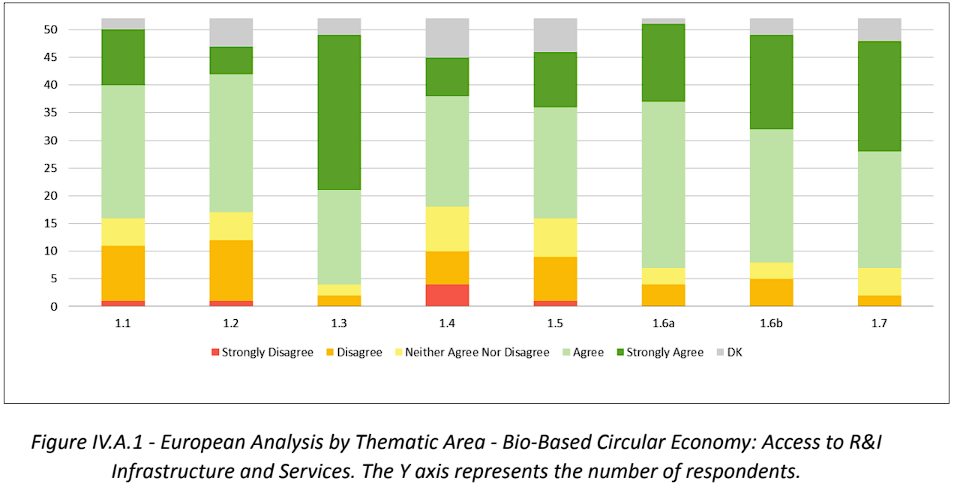
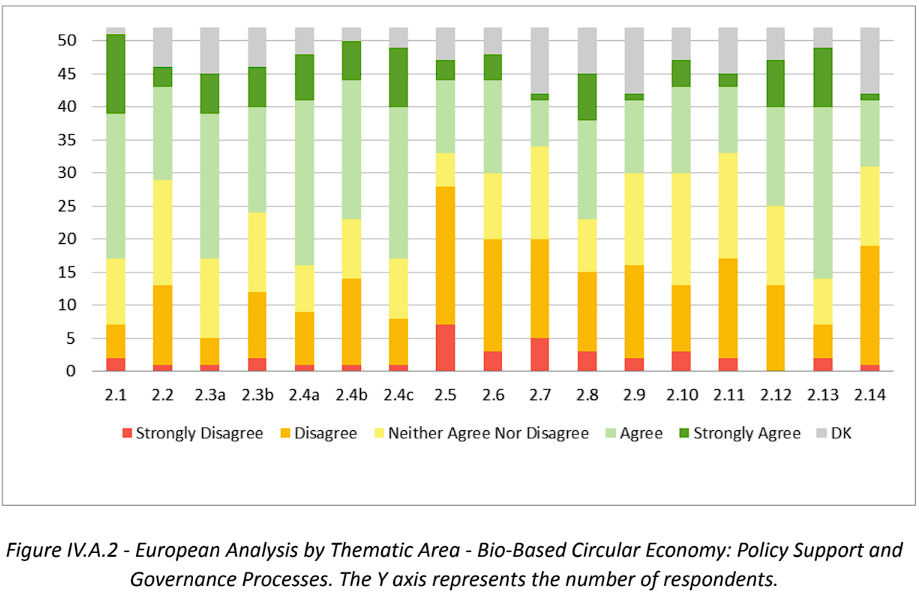
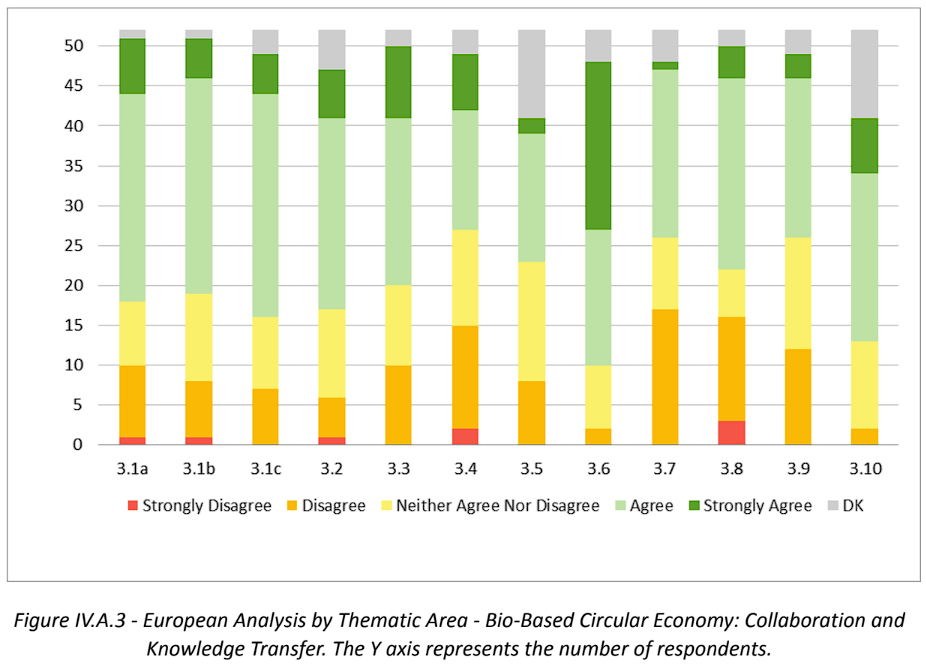

B. Sustainable Manufacturing
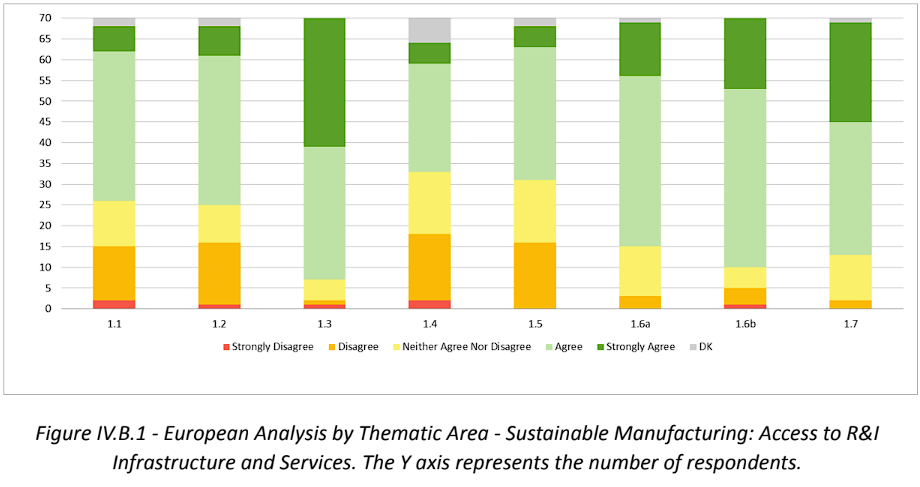
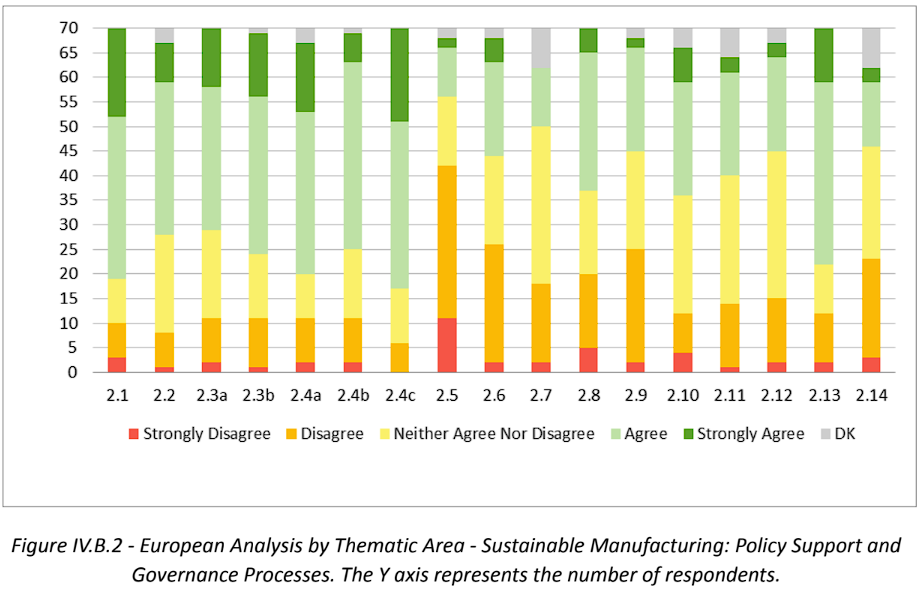

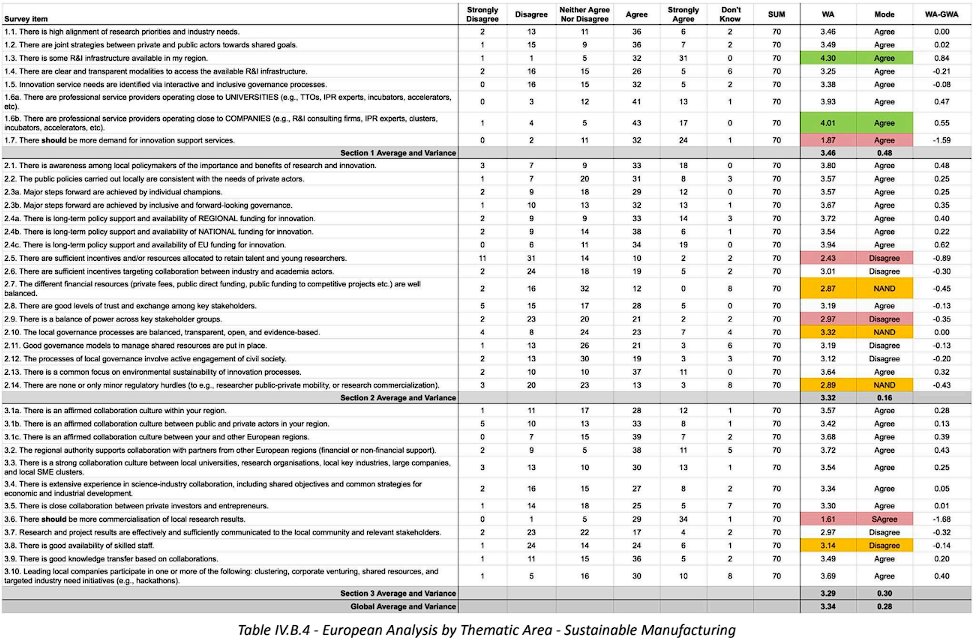
C. Clean Renewable Energy
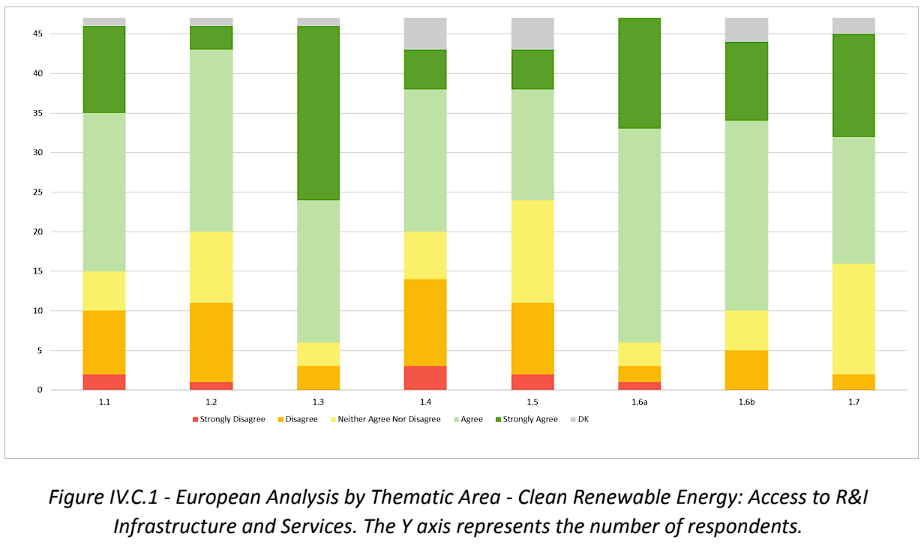

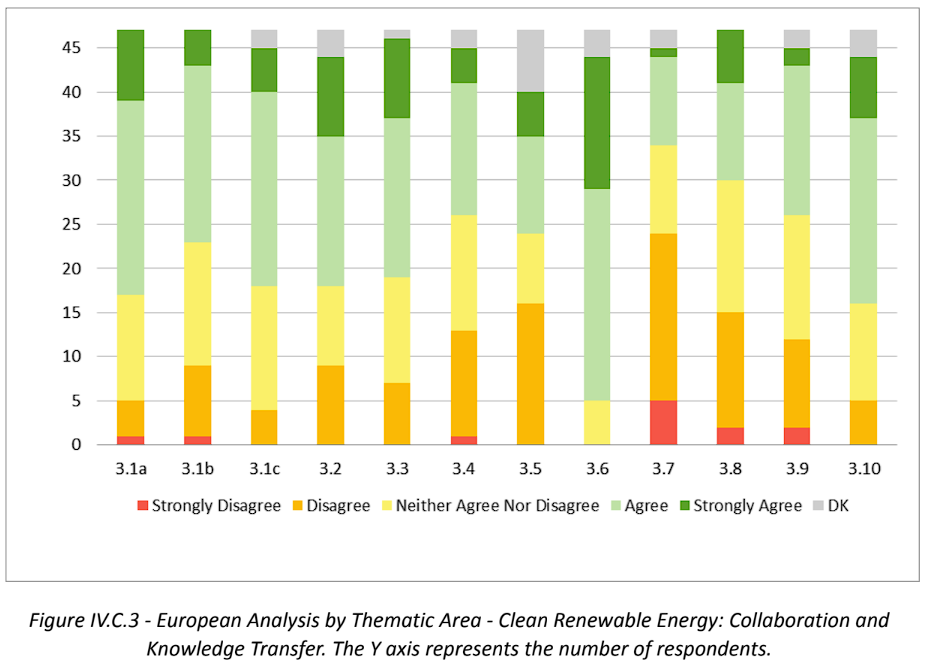
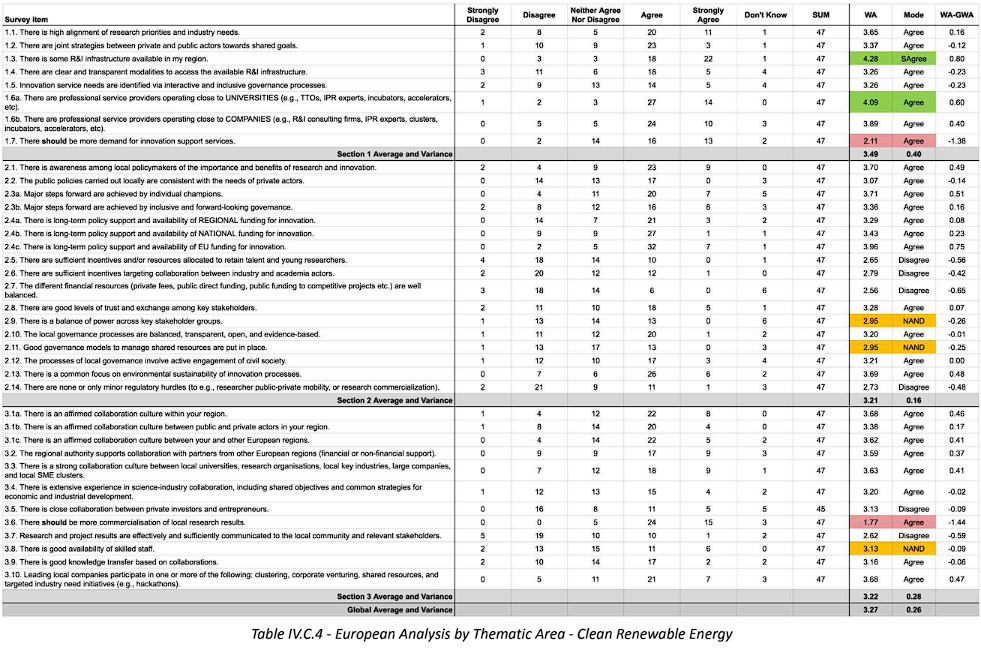
V. Analysis by Stakeholder Type
A. Academia and Research

B. Governance Bodies
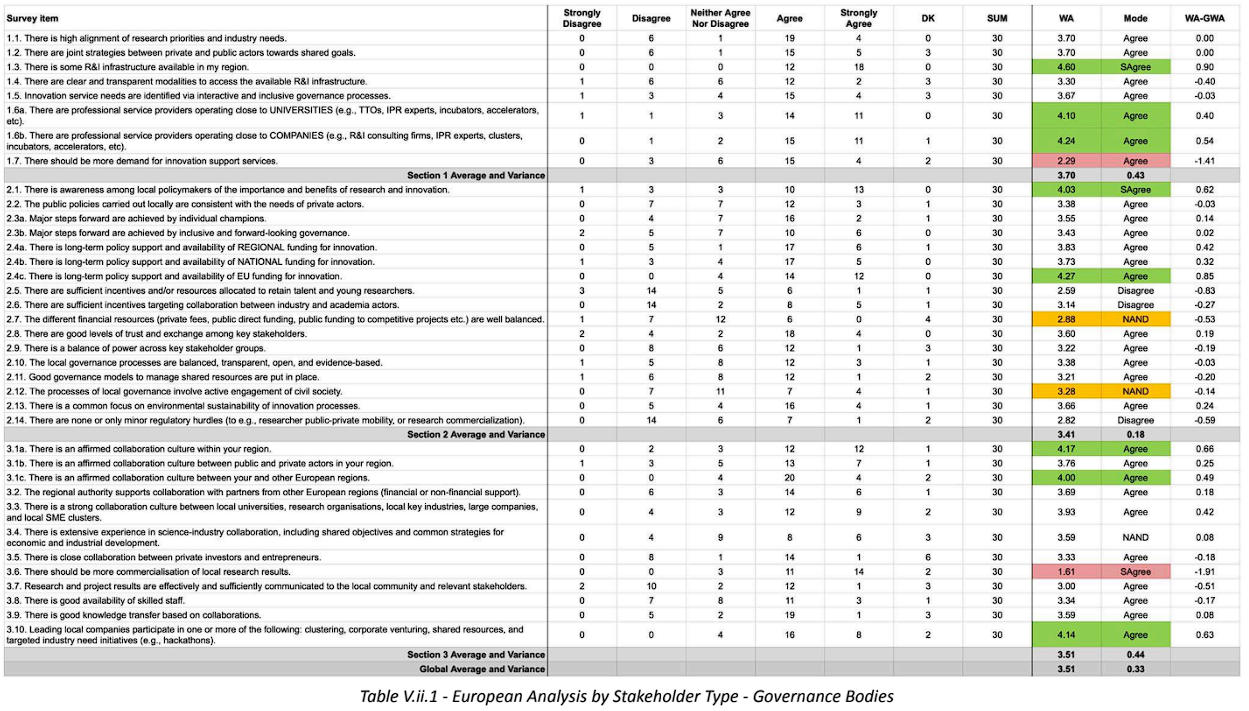
C. Business
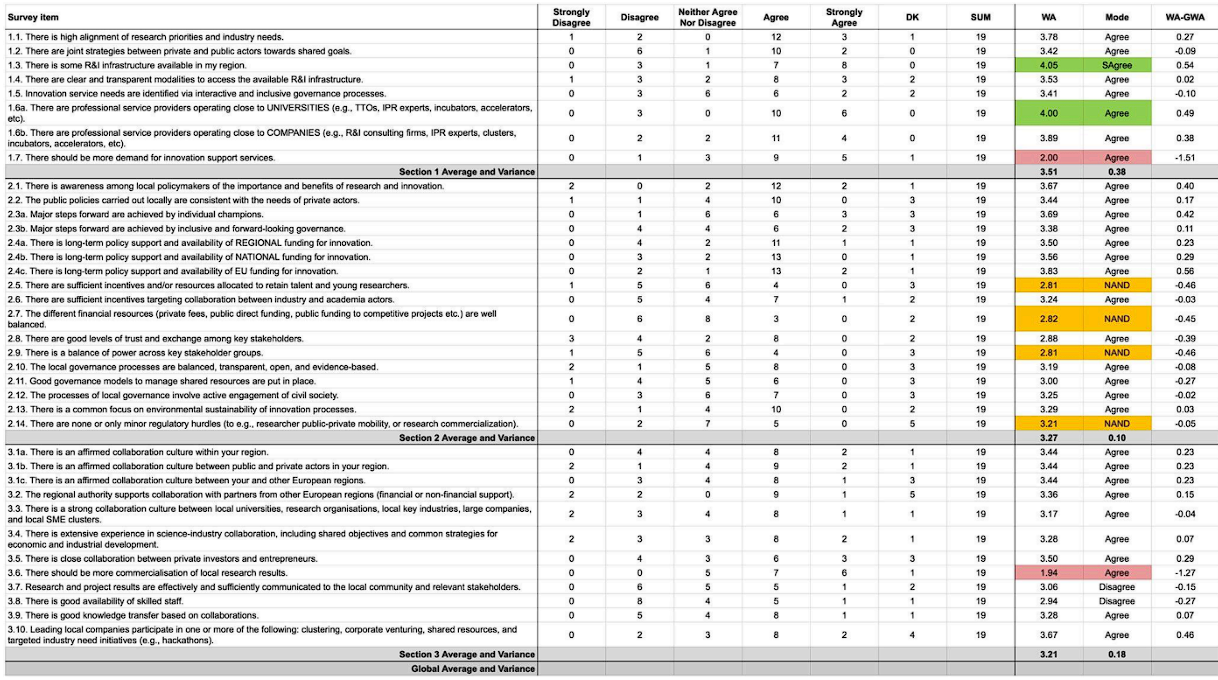
D. Intermediaries
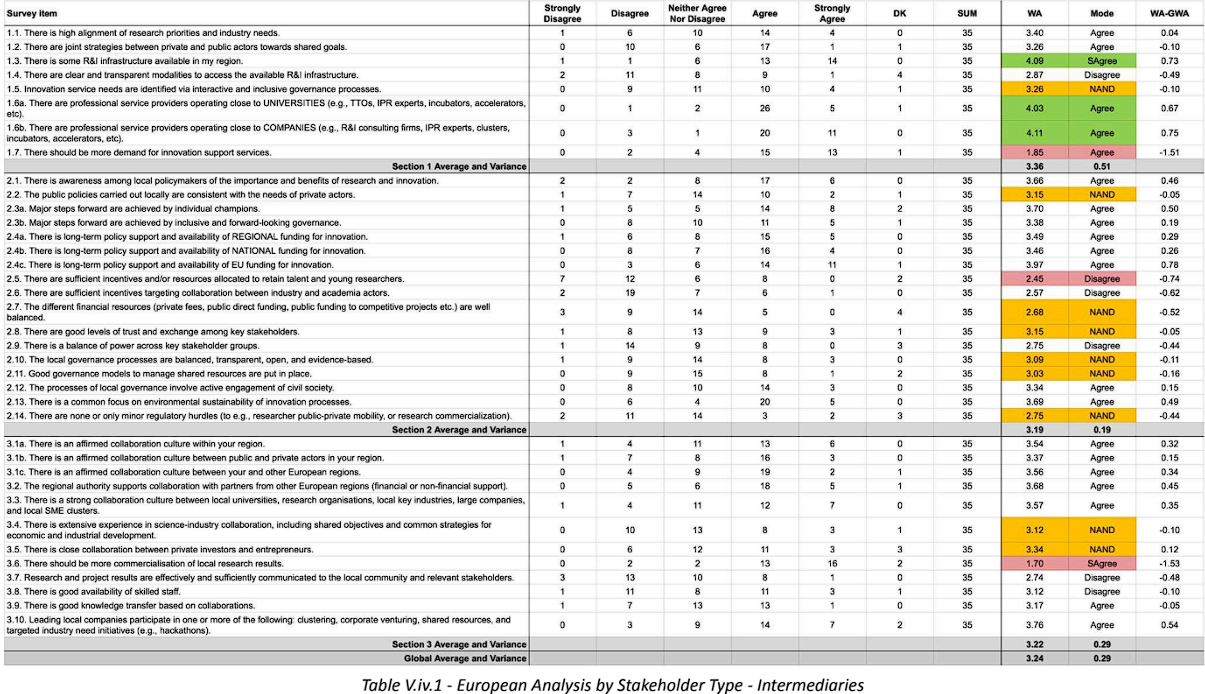
E. Civil Society
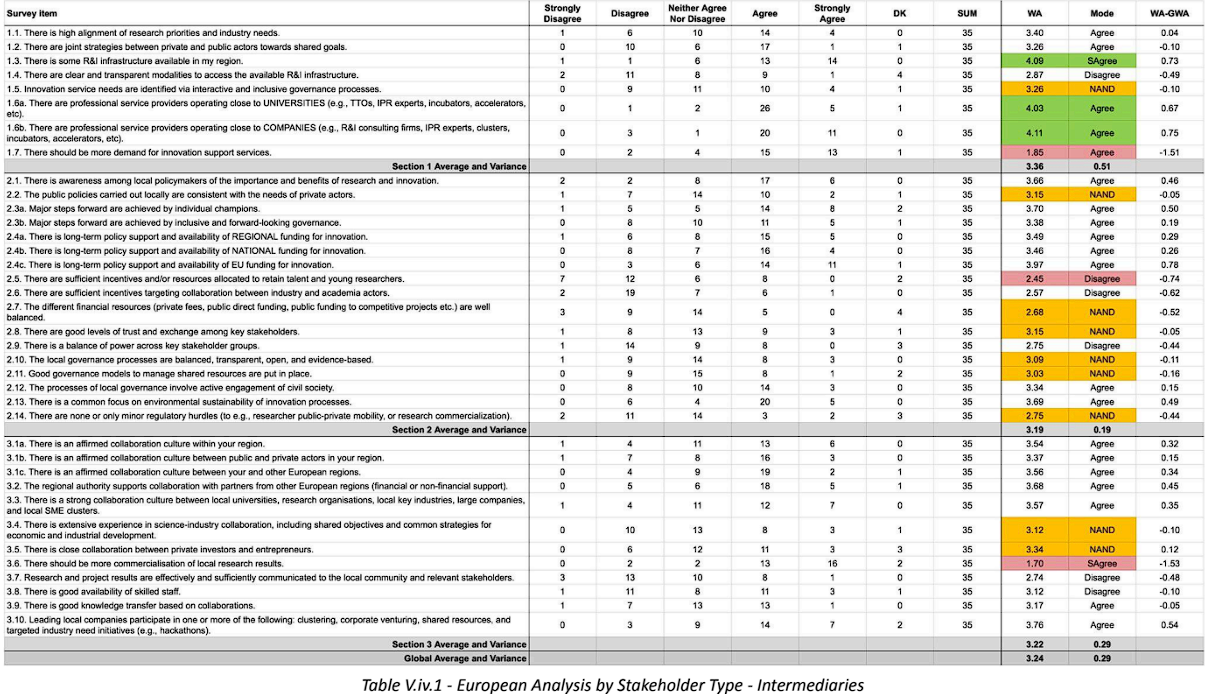
F. Finance
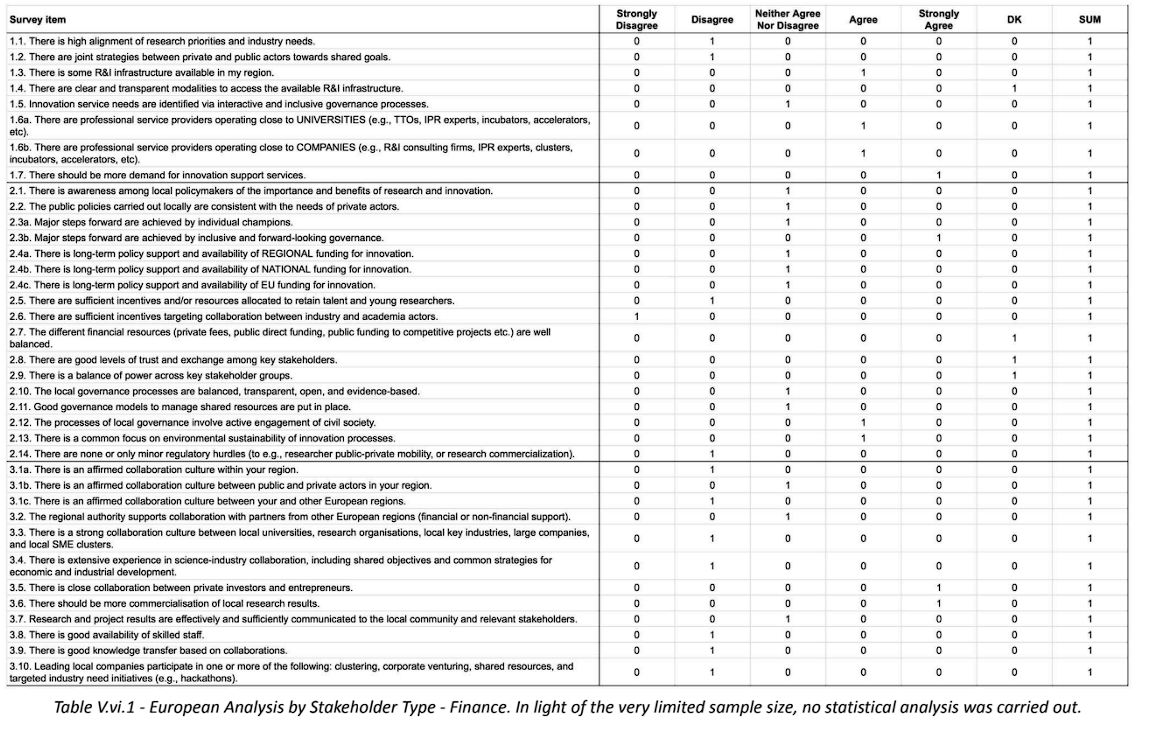
VI. Regional Clustering
a. Innovator Leaders & Strong Innovators

b. Moderate Innovators & Emerging
Innovators
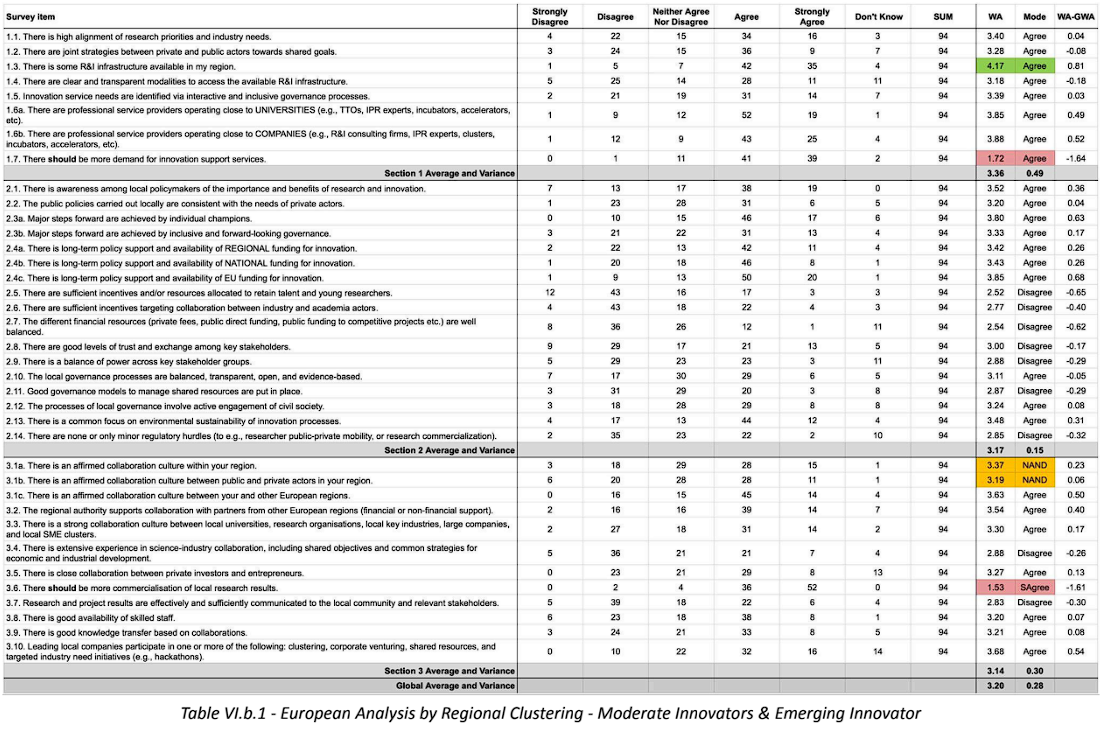
VII. Survey Data
The original survey data will be made available on the Open Science Framework repository at a later date, found at https://osf.io/rpjh2/.


